The woods, rivers, and meadows of Pennsylvania are home to a surprising number of edible plants. American basswood leaves can be plucked fresh in spring, while pawpaw fruits hide like treasure in late summer. Groundnuts, a native wild bean, often tangle themselves along sunny creek banks.
Some edible plants are easy to overlook until you know what to search for, like the delicate shoots of milkweed or the low clusters of wild strawberries. Even urban parks and quiet country roads can hold unexpected foraging opportunities.
Pennsylvania’s landscape offers much more than just a handful of well-known wild edibles. From open meadows to deep forests, there’s always something edible growing somewhere. Learning to spot the right clues can help you go home with an amazing variety of wild flavors in your basket.
What We Cover In This Article:
- The Edible Plants Found in the State
- Toxic Plants That Look Like Edible Plants
- How to Get the Best Results Foraging
- Where to Find Forageables in the State
- Peak Foraging Seasons
- The extensive local experience and understanding of our team
- Input from multiple local foragers and foraging groups
- The accessibility of the various locations
- Safety and potential hazards when collecting
- Private and public locations
- A desire to include locations for both experienced foragers and those who are just starting out
Using these weights we think we’ve put together the best list out there for just about any forager to be successful!
A Quick Reminder
Before we get into the specifics about where and how to find these plants and mushrooms, we want to be clear that before ingesting any wild plant or mushroom, it should be identified with 100% certainty as edible by someone qualified and experienced in mushroom and plant identification, such as a professional mycologist or an expert forager. Misidentification can lead to serious illness or death.
All plants and mushrooms have the potential to cause severe adverse reactions in certain individuals, even death. If you are consuming wild foragables, it is crucial to cook them thoroughly and properly and only eat a small portion to test for personal tolerance. Some people may have allergies or sensitivities to specific mushrooms and plants, even if they are considered safe for others.
The information provided in this article is for general informational and educational purposes only. Foraging involves inherent risks.
The Edible Plants Found in the State
Wild plants found across the state can add fresh, seasonal ingredients to your meals:
American Hazelnut (Corylus americana)
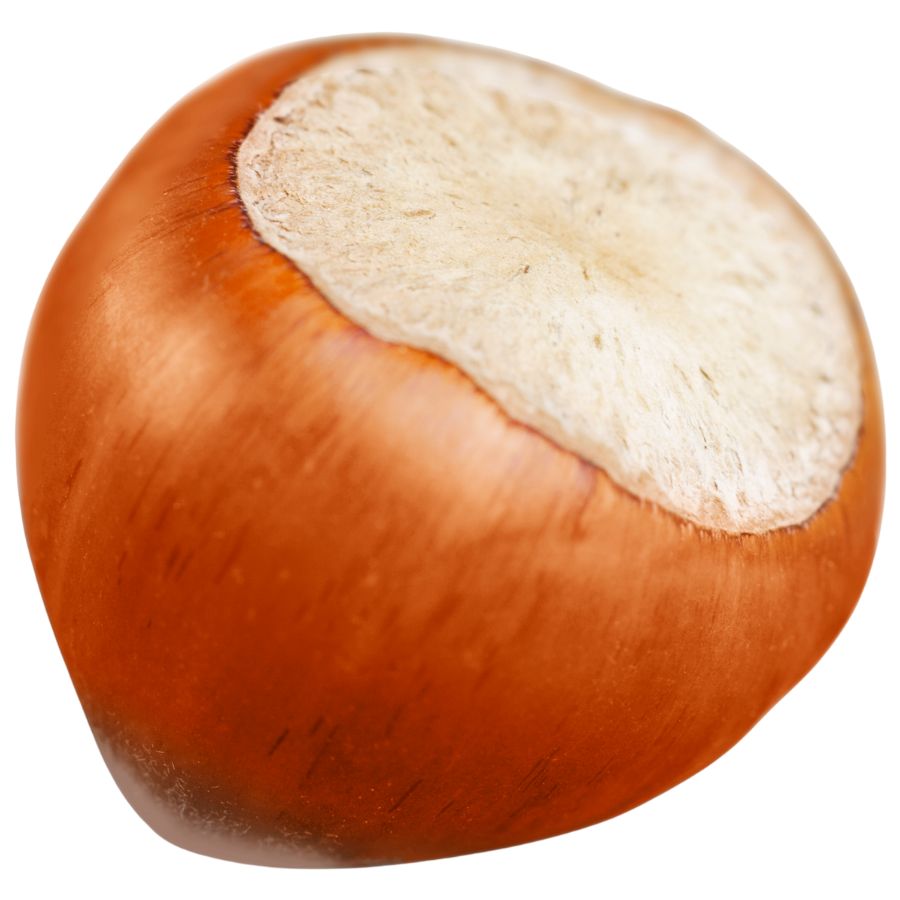
Clusters of round, fringed husks tucked among bushy green leaves usually mean you have found American hazelnut, sometimes called American filbert. It grows as a wide, shrubby plant that spreads along forest edges, open woods, and overgrown fields.
The nuts inside are rich and buttery, with a firm texture that turns creamy when roasted or ground into flour. You can eat them raw, toss them into baked goods, or crush them into a thick, flavorful spread.
It helps to know the difference between American hazelnut and its close cousin, beaked hazelnut, which hides its nut inside a long, pointed husk. Both plants are safe to eat, but the shape of the husk makes it easy to tell which one you have.
Only the inner nut is gathered for food; the leafy husk and hard outer shell are tossed aside. If you leave them too long, local wildlife like squirrels will clear out the patch faster than you can.
Common Blue Violet (Viola sororia)
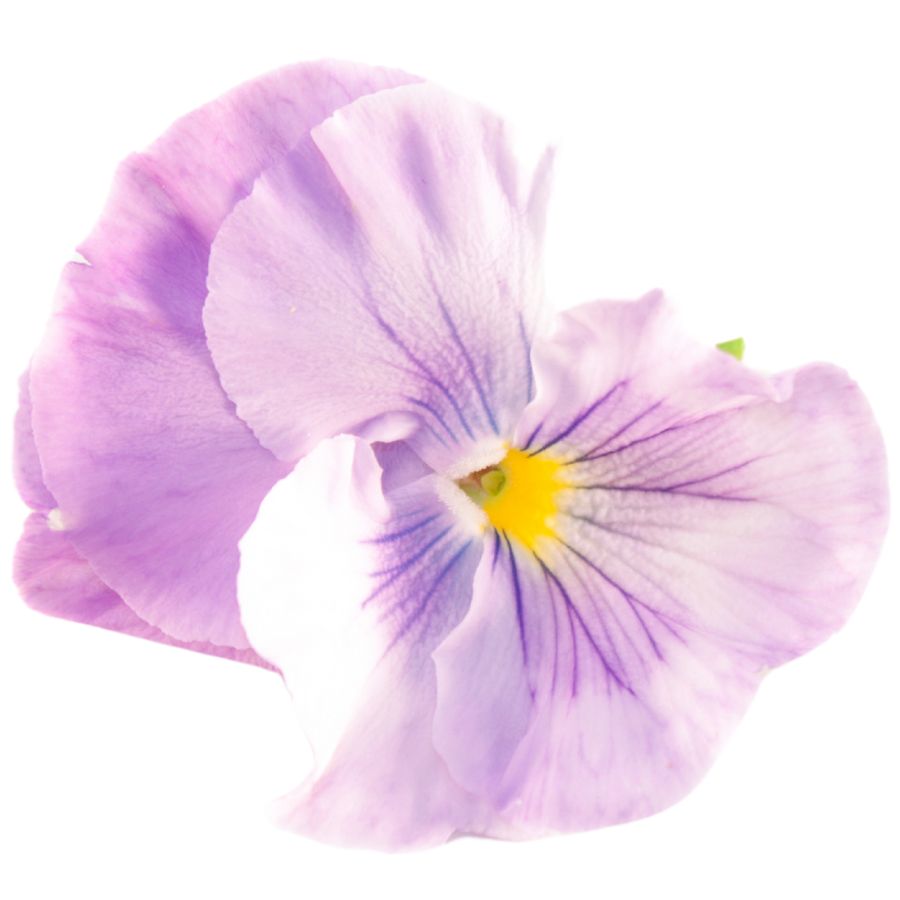
Common blue violet, also called wood violet and meadow violet, grows close to the ground with heart-shaped leaves and purple flowers. The blossoms have five petals, with the lower petal often streaked in darker lines that act like nectar guides for pollinators.
You can eat both the flowers and the young leaves, but skip the older leaves since they tend to get tough and stringy. The blooms taste mild and a little sweet, while the leaves are more grassy and bland.
People often use the flowers to decorate cakes, candy them for treats, or toss them into salads for a pop of color. The leaves can be thrown into soups or smoothies, but it is better to chop them fine because they have a slightly mucilaginous texture.
One plant that sometimes gets confused with common blue violet is lesser celandine, which has shiny, darker leaves and starry yellow flowers instead of purple ones. Always double-check before gathering because eating lesser celandine raw can make you sick.
Curly Dock (Rumex crispus)
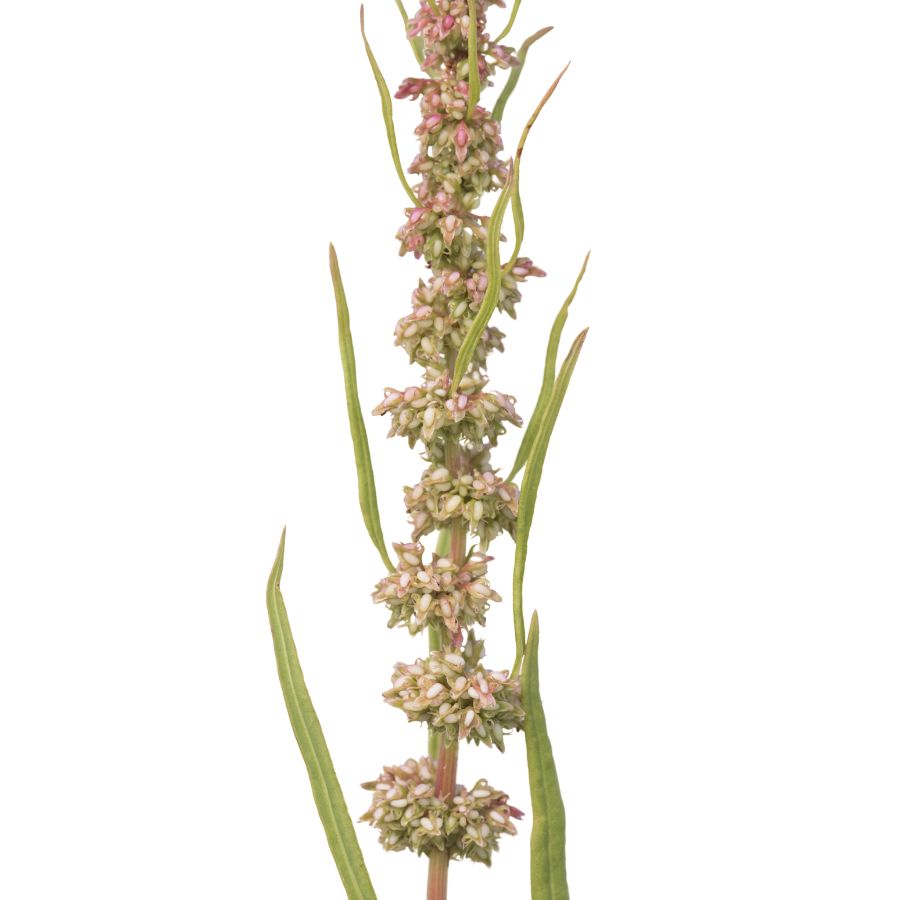
Curly dock, sometimes called yellow dock, is easy to spot once you know what to look for. It has long, wavy-edged leaves that form a rosette at the base, with tall stalks that eventually turn rusty brown as seeds mature.
The young leaves are edible and often cooked to mellow out their sharp, lemony taste, which can be too strong when eaten raw. You can also dry and powder the seeds to use as a flour supplement, although they are tiny and take some effort to prepare.
Curly dock has some lookalikes, like other types of dock and sorrel, but its heavily crinkled leaf edges and thick taproot help it stand out. Be careful not to confuse it with plants like wild rhubarb, which can have toxic parts if misidentified.
Besides being edible, curly dock has a history of being used in homemade remedies for skin irritation. The roots are not eaten raw because they are tough and contain compounds that can upset your stomach if you are not careful.
Black Raspberry (Rubus occidentalis)
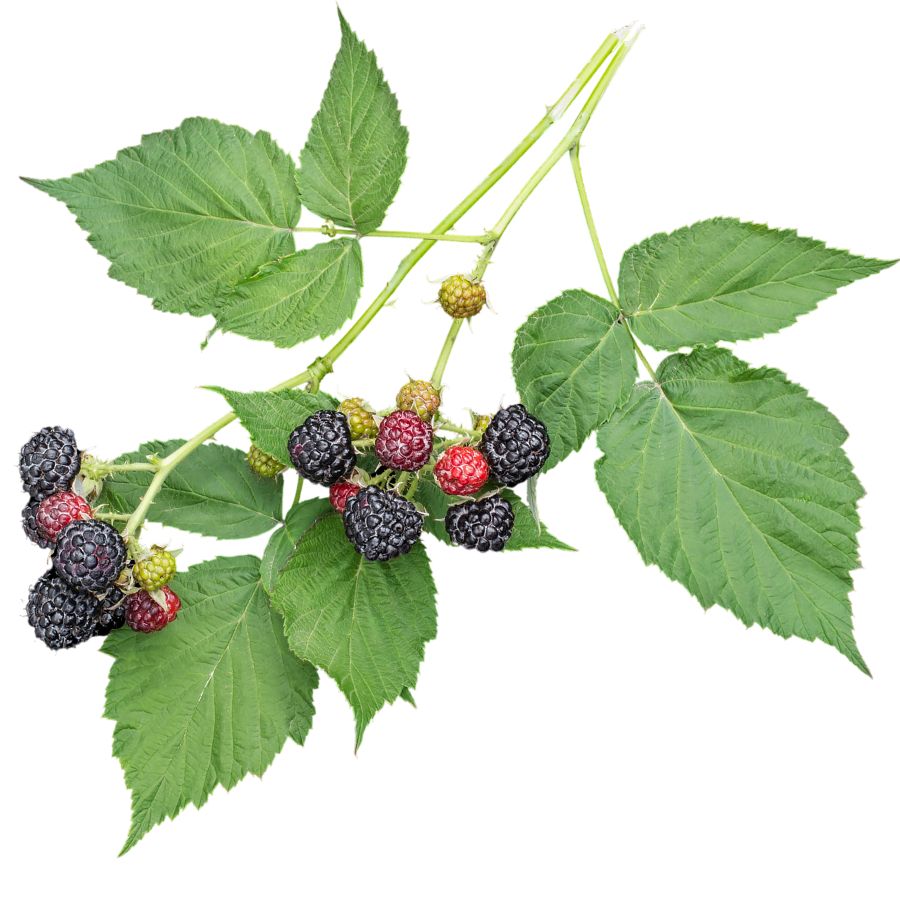
Black raspberries grow on arching canes covered with small, hooked thorns. The berries start out red before ripening to a deep purplish-black color, and they have a hollow core when picked.
The fruit tastes sweet with a mild tartness, and the texture is juicy but slightly firmer than a red raspberry. People often use black raspberries for jams, pies, syrups, and even simple fruit leathers made at home.
Blackberry and wineberry are common lookalikes, which can confuse foragers at first glance. Black raspberry canes usually have a whitish coating and smaller thorns compared to the shinier, stouter canes of a blackberry.
You can eat the ripe fruit raw or cooked, but the leaves are sometimes brewed into teas after proper drying. It is best to avoid the green, unripe berries, as they are tough and lack the flavor that makes black raspberry such a favorite.
Black Walnut (Juglans nigra)
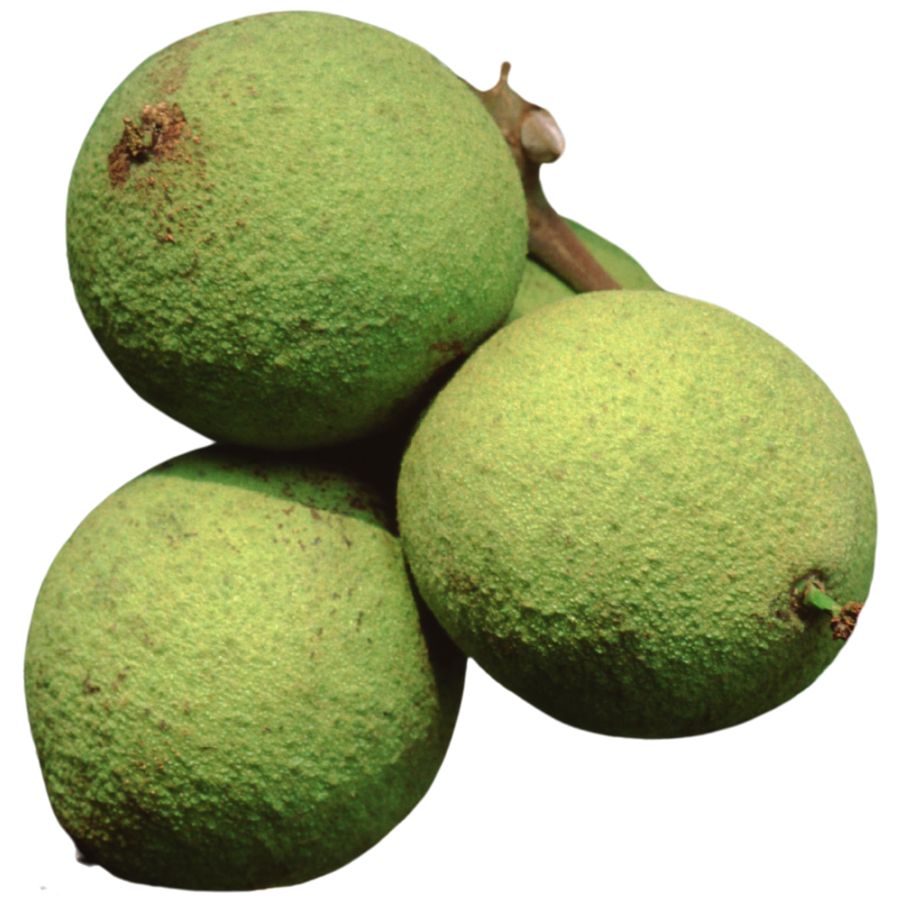
The nuts of the black walnut, sometimes called American walnut or eastern black walnut, have a tough outer husk and a deeply ridged shell inside. When you crack them open, you will find a rich, oily seed with an earthy, slightly bitter flavor that sets them apart from the sweeter English walnut.
It is easy to confuse black walnut with butternut, another tree with compound leaves and rough bark. If you check the nuts closely, black walnut fruits are round with a thick green husk, while butternuts are more oval and sticky.
When you get your hands on the nuts, the common ways to prepare them include baking them into cookies, sprinkling them over salads, or grinding them into a strong-tasting flour. The seeds themselves have a firm, almost chewy texture when raw and become crunchy after roasting.
Only the inner seed is eaten, while the outer husk and shell are discarded because they contain compounds that can irritate your skin. A fun fact about this plant is that even the roots and leaves produce a chemical called juglone, which can make it hard for other plants to grow nearby.
Blueberry (Vaccinium corymbosum, Vaccinium angustifolium)
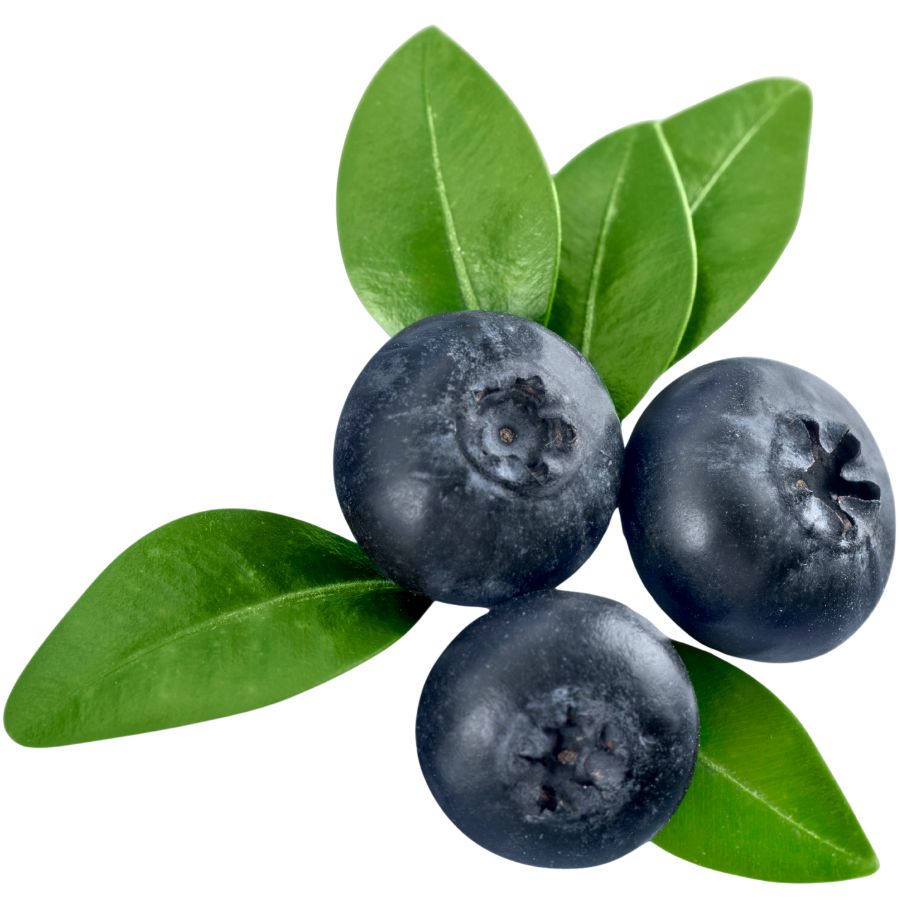
Blueberry, sometimes called highbush or lowbush blueberry depending on the type, grows as a shrub with smooth-edged, oval leaves and clusters of small white or pinkish bell-shaped flowers. The berries start green and ripen to a deep blue with a dusty-looking skin that easily rubs off.
A few lookalikes can confuse foragers, like the berries of Virginia creeper or pokeweed, but the differences are clear when you know what to check. True blueberries grow on woody shrubs and have a five-pointed crown on the bottom of each berry, while dangerous lookalikes often grow on vines or have no crown at all.
Blueberries have a sweet, sometimes tangy flavor and a juicy texture that makes them great for fresh eating. You can also bake them into pies, simmer them into jams, or dry them for snacks.
Only the ripe berries are eaten, while the leaves and stems are usually left alone.
Interestingly, blueberries is that they contain natural pigments that can turn recipes and even your fingers a deep purple when handled.
Burdock (Arctium minus)
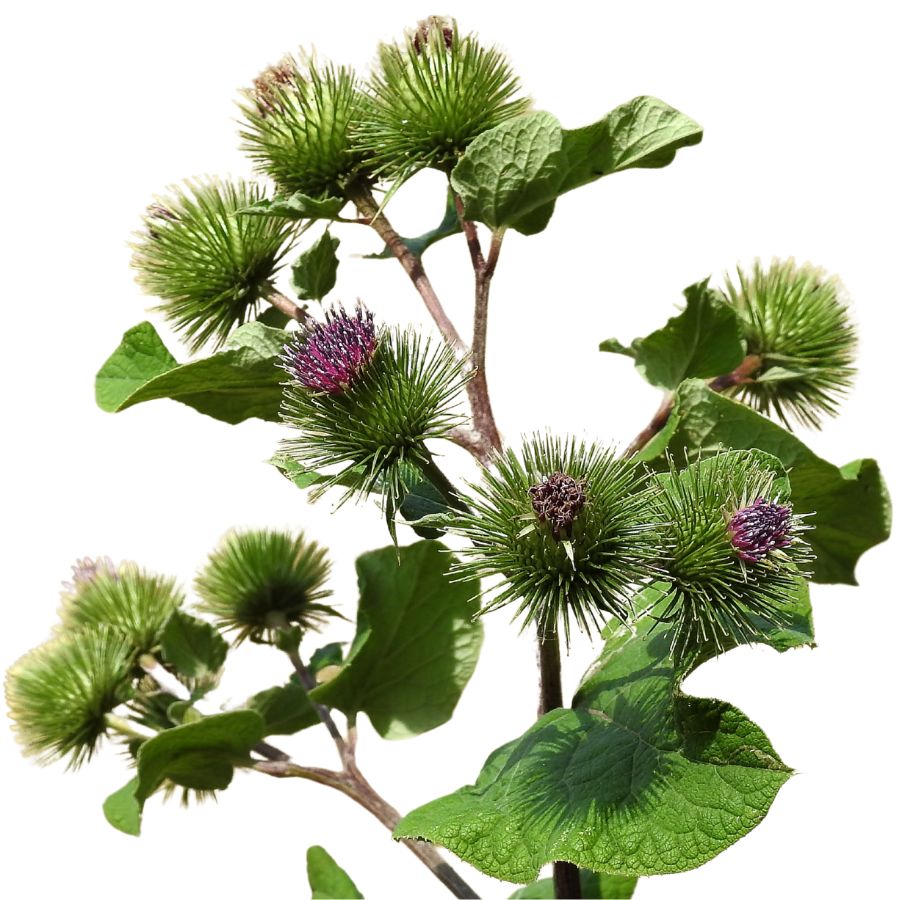
Burdock, also known as burrweed or beggar’s buttons, grows large, floppy leaves and produces clusters of sticky seed heads that cling to clothing and fur. The plant can easily tower over you once it matures, especially when the thick stalks shoot up.
The root is the main edible part and has a crisp texture with a mild, sweet, slightly earthy flavor when cooked. You should avoid eating the leaves or seed heads, as they tend to be unpleasantly bitter and tough even when young.
When you cook burdock root, it works well sliced thin and stir-fried, boiled into soups, or simmered with other vegetables to soak up savory flavors. Peeling the root before cooking can help soften the flavor and improve the texture.
It is important to watch out for lookalikes like foxglove and woolly mullein, which can grow similarly large leaves at the base. True burdock leaves have a whitish, fuzzy underside and strong, fibrous stems that are solid rather than hollow.
Cattail (Typha latifolia, Typha angustifolia)
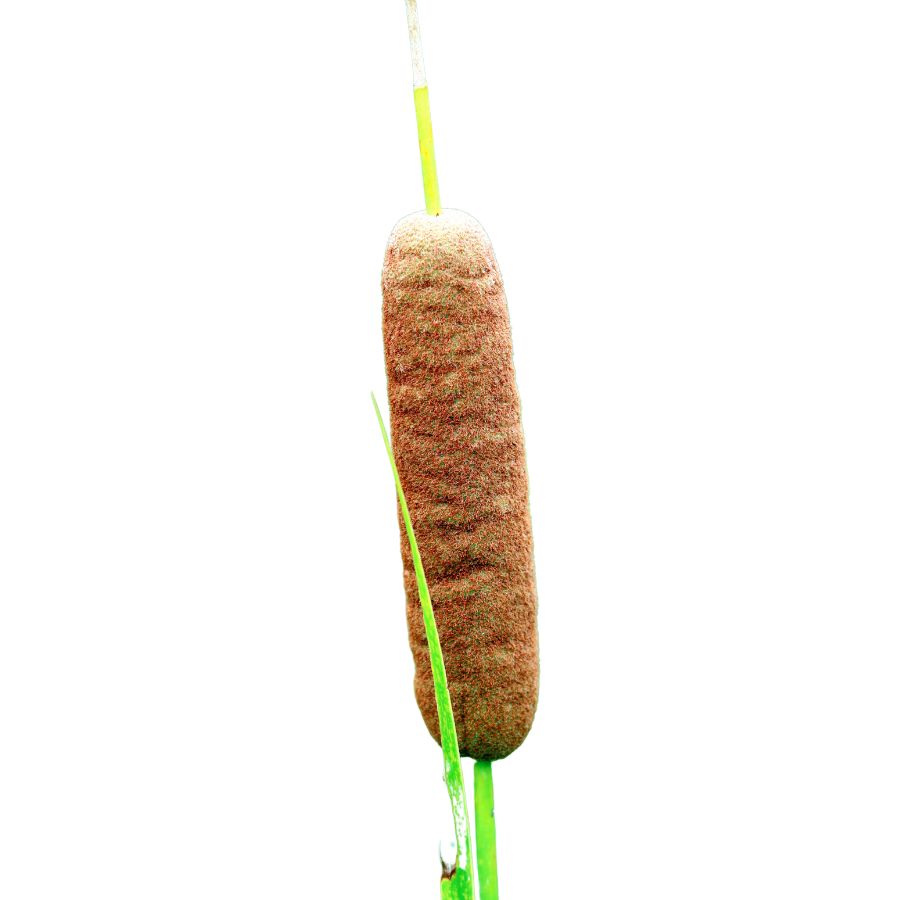
Cattails, often called bulrushes or corn dog grass, are easy to spot with their tall green stalks and brown, sausage-shaped flower heads. They grow thickly along the edges of ponds, lakes, and marshes, forming dense stands that are hard to miss.
Almost every part of the cattail is edible, including the young shoots, flower heads, and starchy rhizomes. You can eat the tender shoots raw, boil the flower heads like corn on the cob, or grind the rhizomes into flour for baking.
Besides food, cattails have long been used for making mats, baskets, and even insulation by weaving the dried leaves and using the fluffy seeds. Their combination of usefulness and abundance has made them an important survival plant for many cultures.
One thing you need to watch for is young cattail shoots being confused with similar-looking plants like iris, which are toxic. A real cattail shoot will have a mild cucumber-like smell when you snap it open, while iris plants smell bitter or unpleasant.
Chickweed (Stellaria media)
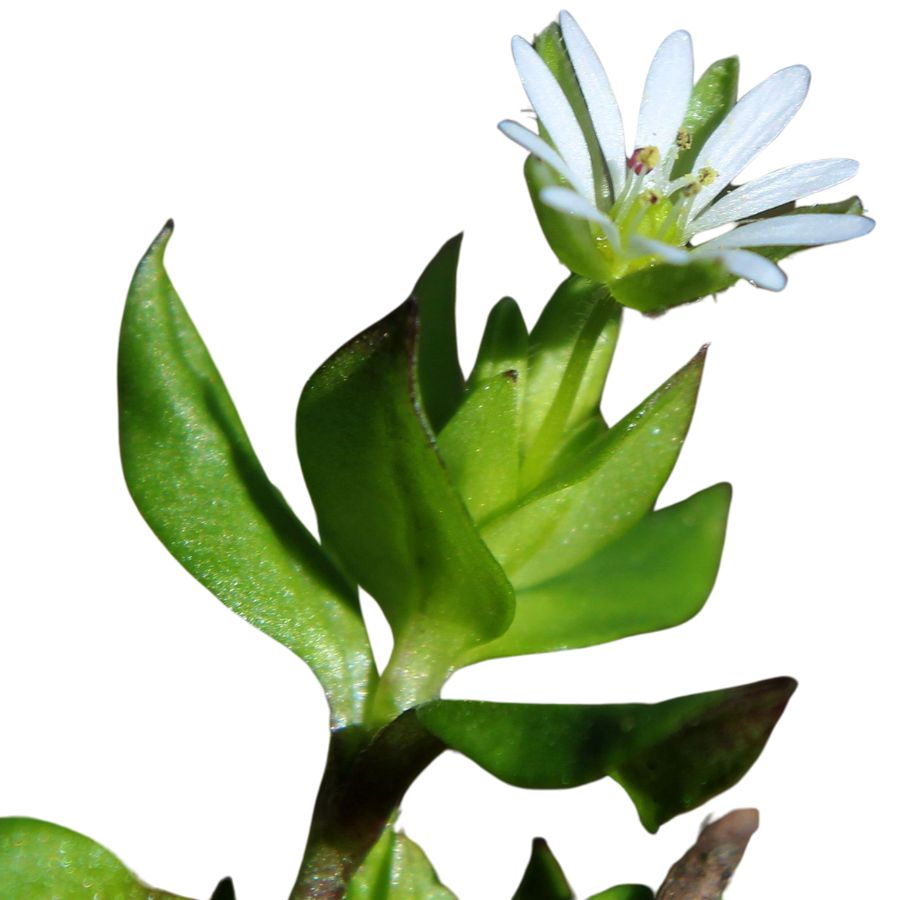
Chickweed, sometimes called satin flower or starweed, is a small, low-growing plant with delicate white star-shaped flowers and bright green leaves. The leaves are oval, pointed at the tip, and often grow in pairs along a slender, somewhat weak-looking stem.
When gathering chickweed, watch out for lookalikes like scarlet pimpernel, which has similar leaves but orange flowers instead of white. A key detail to check is the fine line of hairs that runs along one side of chickweed’s stem, a feature the dangerous lookalikes do not have.
The young leaves, tender stems, and flowers of chickweed are all edible, offering a mild, slightly grassy flavor with a crisp texture. You can toss it fresh into salads, blend it into pestos, or lightly wilt it into soups and stir-fries for a fresh green boost.
Aside from being a food plant, chickweed has been used traditionally in poultices and salves to help soothe skin irritations. Always make sure the plant is positively identified before eating, since mistaking it for a toxic lookalike could cause serious issues.
Dandelion (Taraxacum officinale)
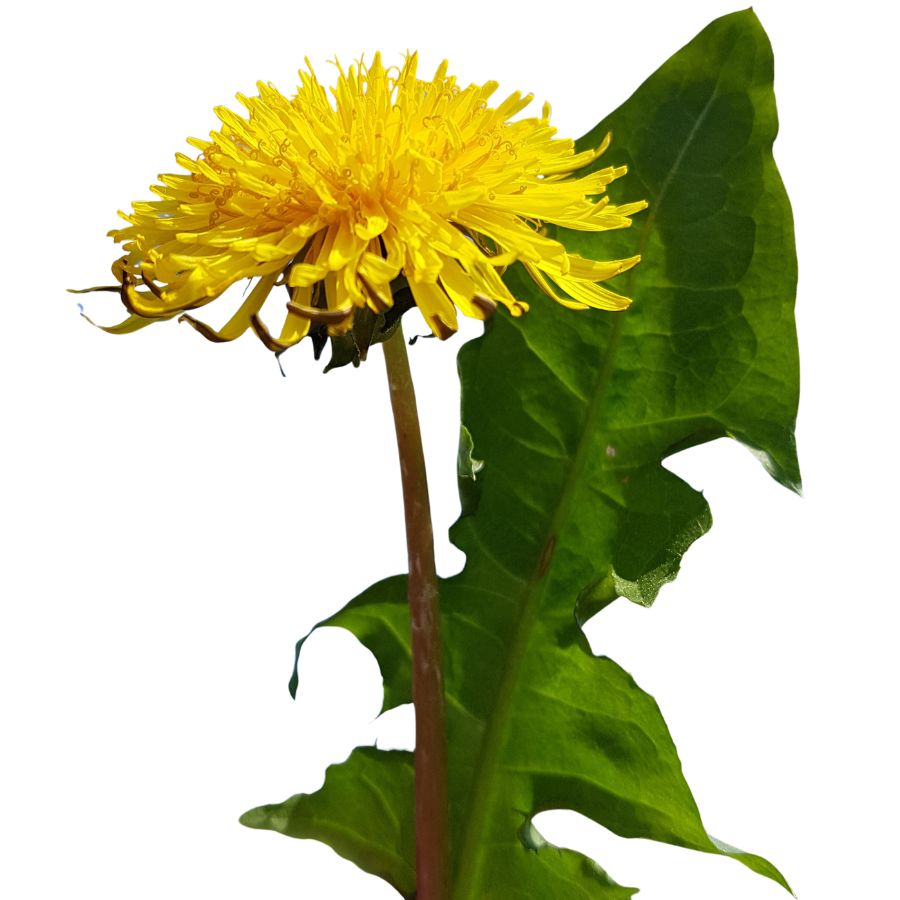
Bright yellow flowers and jagged, deeply toothed leaves make dandelions easy to spot in open fields, lawns, and roadsides. You might also hear them called lion’s tooth, blowball, or puffball once the flowers turn into round, white seed heads.
Every part of the dandelion is edible, but you will want to avoid harvesting from places treated with pesticides or roadside areas with heavy car traffic. Besides being a food source, dandelions have been used traditionally for simple herbal remedies and natural dye projects.
Young dandelion leaves have a slightly bitter, peppery flavor that works well in salads or sautés, and the flowers can be fried into fritters or brewed into tea. Some people even roast the roots to make a coffee substitute with a rich, earthy taste.
One thing to watch out for is cat’s ear, a common lookalike with hairy leaves and branching flower stems instead of a single, hollow one. To make sure you have a true dandelion, check for a smooth, hairless stem that oozes a milky sap when broken.
Milkweed (Asclepias syriaca)
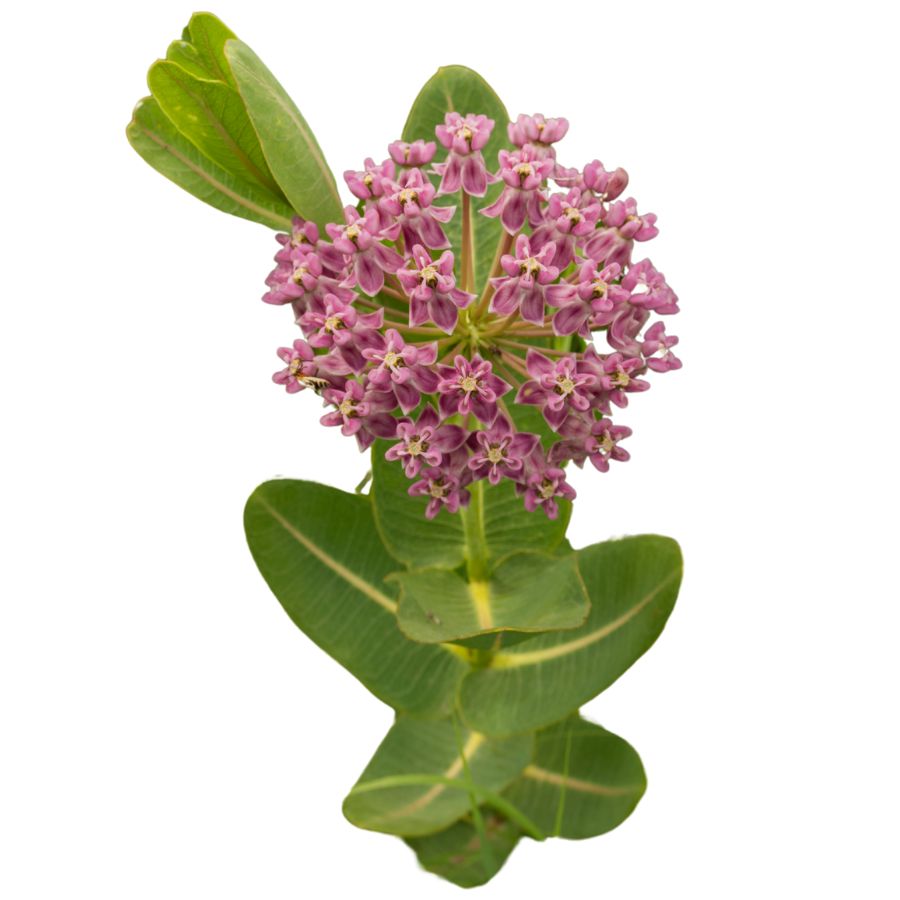
Known for its thick stems, broad leaves, and clusters of pinkish-purple flowers, common milkweed is sometimes called silkweed or butterfly flower. When you snap a stem or leaf, it releases a milky sap that helps you tell it apart from other plants that can be harmful.
If you want to try it in the kitchen, focus on gathering the young shoots, the tightly closed flower buds, and the small, immature pods. These parts have a mild, slightly sweet flavor when cooked, and their soft texture makes them a good addition to soups, sautés, and fritters.
Getting it ready to eat takes a little care, since boiling the plant parts in several changes of water helps remove bitterness and unwanted compounds. Some people also like to steam the buds or fry the pods lightly to bring out their best taste.
Although monarch caterpillars rely on this plant for survival, it has a long history of being used by people as well. Watch out for lookalikes like dogbane, though, since they share the same milky sap but are dangerously toxic if eaten.
Plantain (Plantago major, Plantago lanceolata)

Plantain, also called common plantain or narrowleaf plantain depending on the type, is a low-growing plant with broad or lance-shaped leaves and tall, slender flower spikes. The leaves grow in a rosette close to the ground, and the thick veins running through them are one of the easiest ways to tell it apart from other plants.
You can mainly eat the young leaves and the seeds of the plants. Older leaves can become tough and stringy, so it is best to pick the smaller, tender ones when you want to eat them.
Plantain leaves have a slightly bitter, earthy taste and a chewy texture, especially when eaten raw. Many people like to add them to salads, soups, or stews, or lightly steam them to soften the flavor.
Always make sure you have a true plantain before eating because some similar-looking yard plants are not palatable and can upset your stomach. Look for the strong parallel veins and the tough, fibrous stems to help confirm your find.
American Persimmon (Diospyros virginiana)
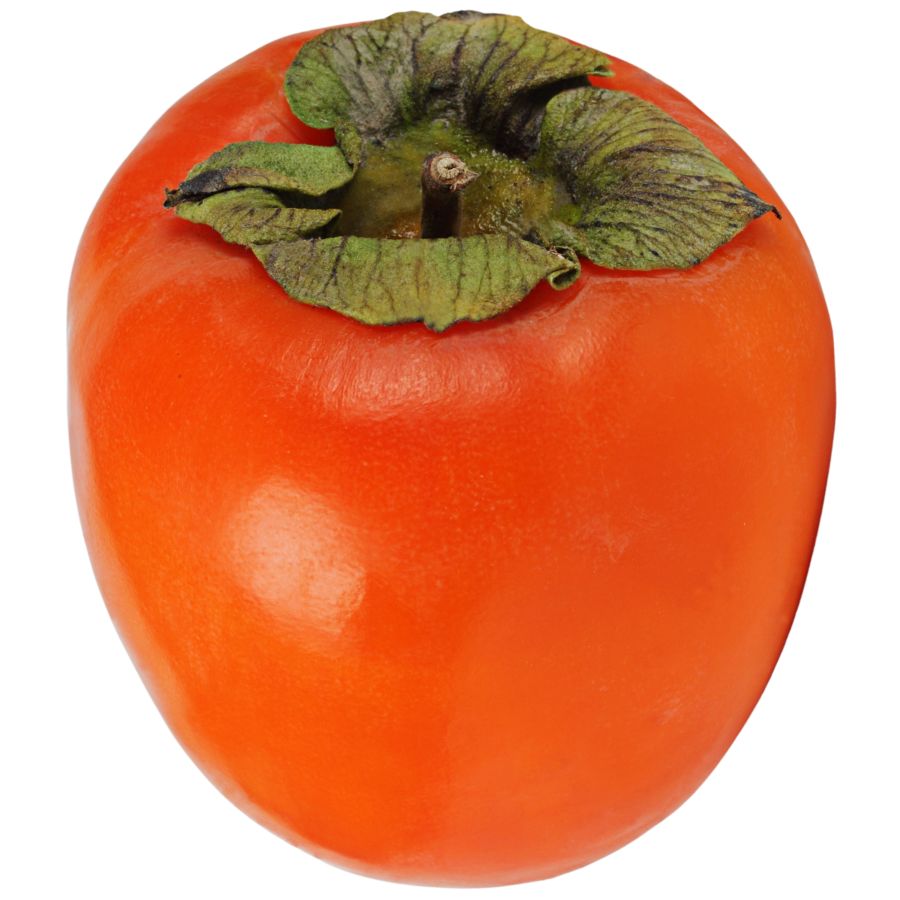
Persimmon, sometimes called American persimmon or common persimmon, grows as a small tree with rough, blocky bark and oval-shaped leaves. The fruit looks like a small, flattened tomato and turns a deep orange or reddish color when ripe.
If you bite into an unripe persimmon, you will quickly notice an extremely astringent, mouth-drying effect. A ripe persimmon, on the other hand, tastes sweet, rich, and custard-like, with a soft and jelly-like texture inside.
You can eat persimmons fresh once they are fully ripe, or you can cook them down into puddings, jams, and baked goods. Some people also mash and freeze the pulp to use later for pies, breads, and sauces.
Wild persimmons can sometimes be confused with black nightshade berries, but nightshade fruits are much smaller, grow in clusters, and stay dark purple or black. Only the ripe fruit of the persimmon tree should be eaten; the seeds and the unripe fruit are not edible.
Bee Balm (Monarda didyma)
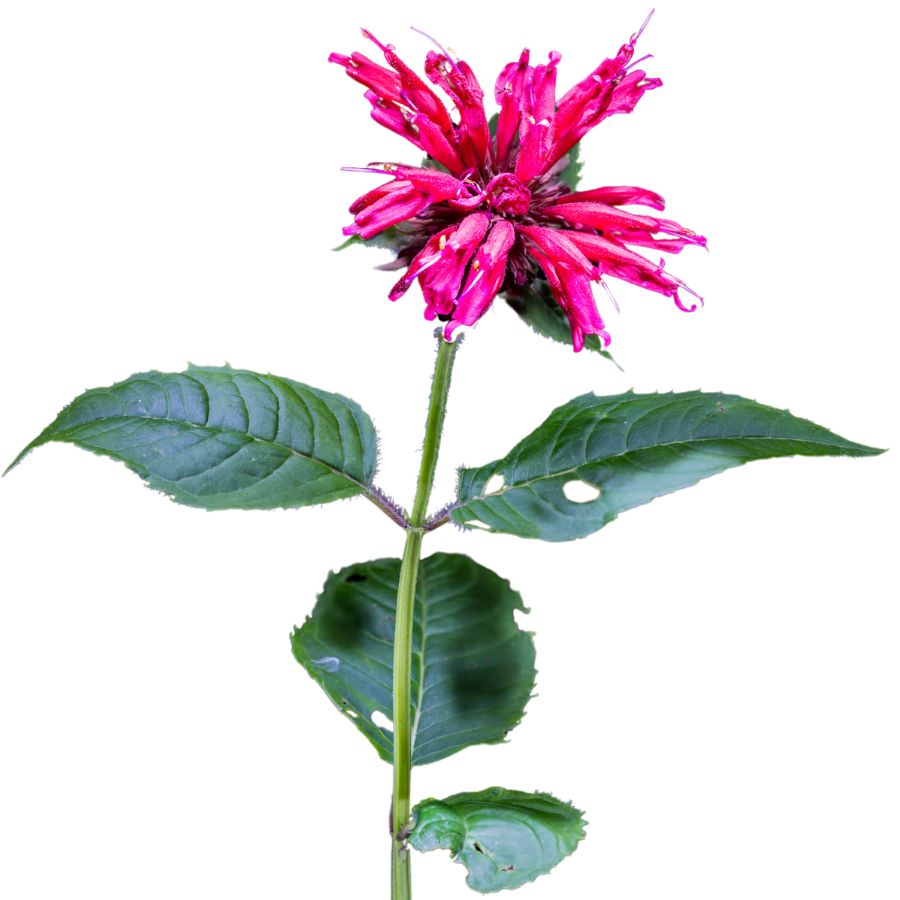
Also called bergamot, horsemint, or Oswego tea, bee balm is a bright plant with scarlet-red blooms that attract hummingbirds and bees alike. The leaves are what you would use for food, offering a spicy, minty scent that stands out when crushed between your fingers.
If you ever come across wild mints or even purple bergamot, keep in mind that while they are related, their flavors are different and some varieties can be harsher or more bitter. Bee balm leaves have a softer bite and a hint of oregano-like warmth, setting them apart from tougher wild mints.
The flowers and leaves both have a strong flavor that works well for brewing into teas or infusing into syrups. Some people also chop the leaves and sprinkle them into salads or use them as a seasoning, especially with meats or roasted vegetables.
Although bee balm is generally safe, using too much at once can cause slight stomach upset if you’re sensitive to strong plants. It is interesting to know that long ago, certain Native American groups made a tea from the leaves as a calming drink after meals.
Elderberry (Sambucus nigra subsp. canadensis)
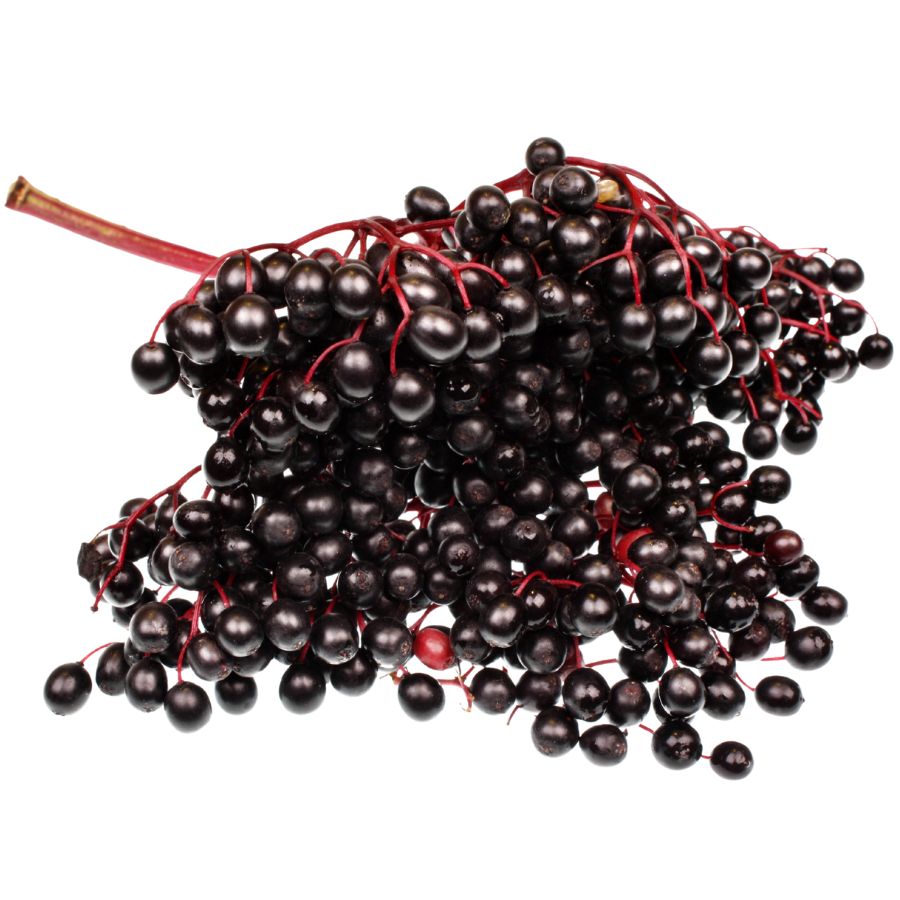
Elderberry is often called American elder, common elder, or sweet elder. It grows as a large, shrubby plant with clusters of tiny white flowers that eventually turn into deep purple to black berries.
You can recognize elderberry by its compound leaves with five to eleven serrated leaflets and its flat-topped flower clusters. One important thing to watch out for is its toxic lookalikes, like pokeweed, which has very different smooth-edged leaves and reddish stems.
The ripe berries have a tart, almost earthy flavor and a soft texture when cooked. People usually cook elderberries into syrups, jams, pies, or wine because eating raw berries can cause nausea.
Only the ripe, cooked berries and flowers are edible, while the leaves, stems, and unripe berries are toxic. Always take care to strip the berries cleanly from their stems before using them, as even small bits of stem can cause problems.
Garlic Mustard (Alliaria petiolata)
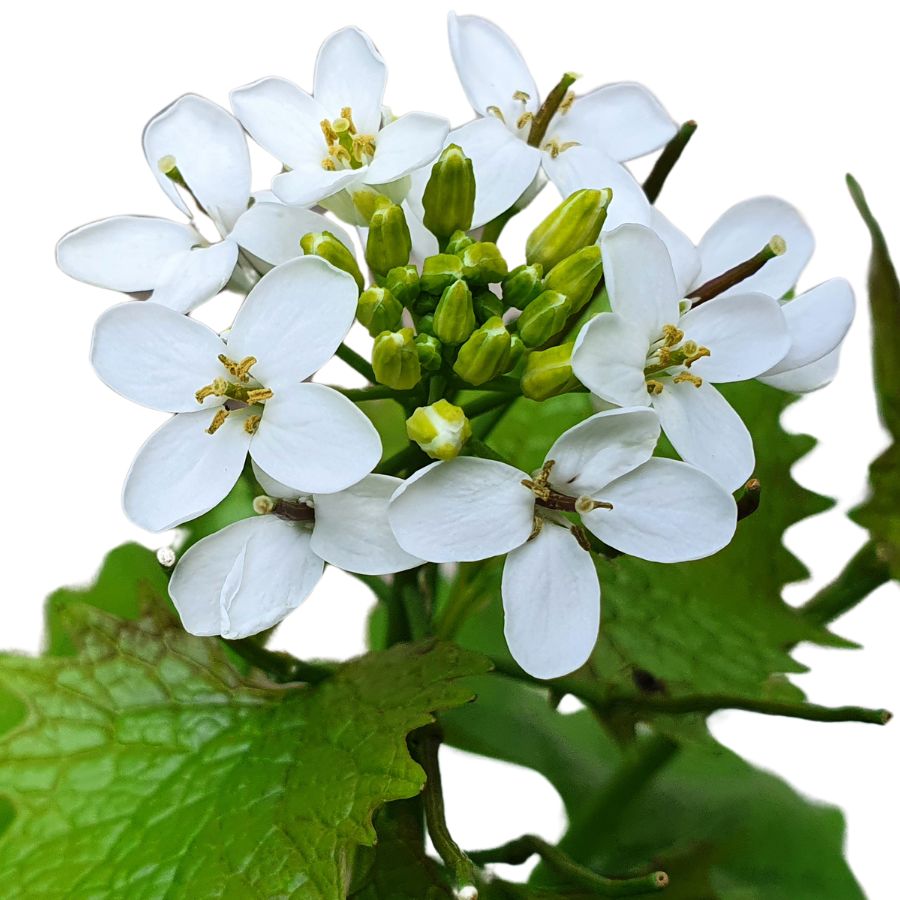
Garlic mustard, sometimes called poor man’s mustard or hedge garlic, has heart-shaped leaves with scalloped edges and small white four-petaled flowers. When you crush the leaves between your fingers, they release a strong garlic-like smell that makes it stand out from similar-looking plants.
The flavor of garlic mustard is sharp and garlicky at first bite, with a peppery bitterness that lingers. Its young leaves are often blended into pestos, stirred into soups, or tossed into salads to add a punch of flavor.
You can also use the roots, which have a taste similar to horseradish when fresh. The seed pods are sometimes collected and used as a spicy seasoning after being dried and crushed.
If you decide to gather some, make sure not to confuse it with plants like ground ivy or purple deadnettle, which do not have that garlic aroma. Stick to harvesting the leaves, flowers, seeds, and roots, and avoid anything with a fuzzy texture or a very different smell.
Orange Jewelweed (Impatiens capensis)
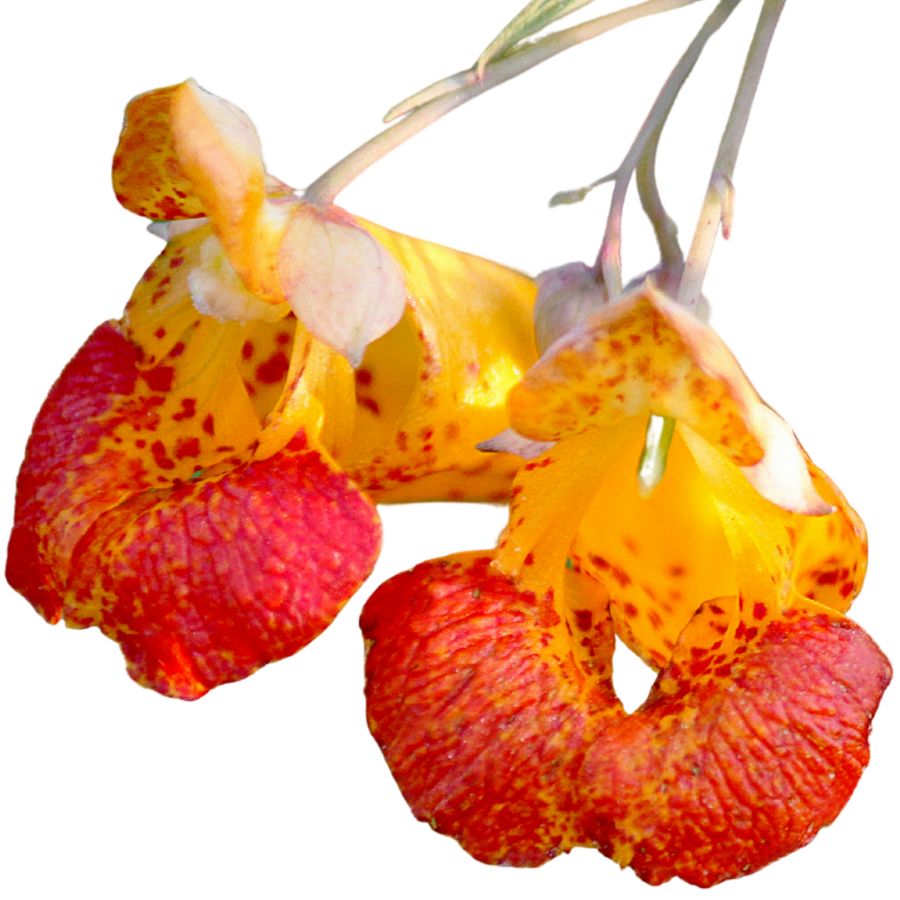
Orange jewelweed, sometimes called spotted touch-me-not or orange balsam, grows tall with juicy stems and bright orange, freckled flowers. The leaves are oval with fine teeth and often look silvery when wet, making them stand out in shady areas.
The tender young shoots are the part you want to use, but they have to be cooked thoroughly to be safe to eat. Boiling them in a few changes of water takes out the bitterness and neutralizes any compounds that can cause stomach upset.
When cooked properly, the shoots taste mild and slightly green, a bit like young spinach. They are often boiled and added to soups or stews, but you can also use them as a side dish after a final rinse with clean water.
Some people confuse orange jewelweed with garden balsam, which has similar-looking flowers but a rougher, more robust stem. Always check for the smooth, almost watery stem and the signature explosion of seeds when touched, which garden balsam does not have.
Lamb’s Quarters (Chenopodium album)
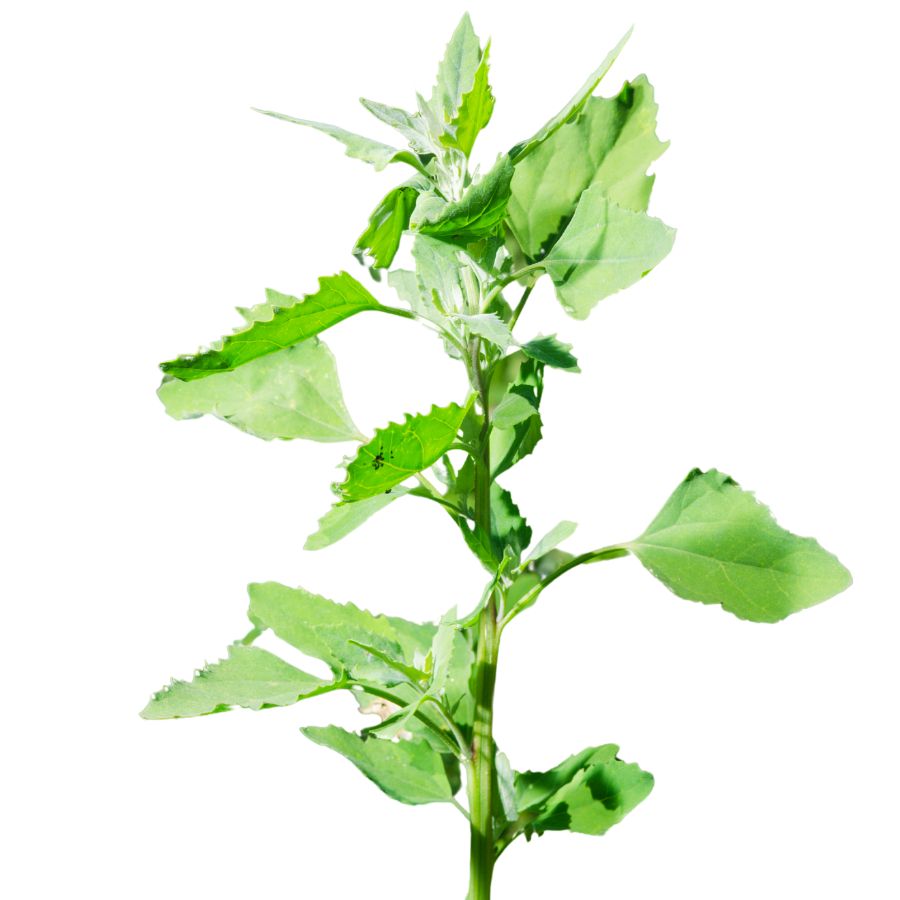
Lamb’s quarters, also called wild spinach and pigweed, has soft green leaves that often look dusted with a white, powdery coating. The leaves are shaped a little like goose feet, with slightly jagged edges and a smooth underside that feels almost velvety when you touch it.
A few plants can be confused with lamb’s quarters, like some types of nightshade, but true lamb’s quarters never have berries and its leaves are usually coated in that distinctive white bloom. Always check that the stems are grooved and not round and smooth like the poisonous lookalikes.
When you taste lamb’s quarters, you will notice it has a mild, slightly nutty flavor that gets richer when cooked. The young leaves, tender stems, and even the seeds are all edible, but you should avoid eating the older stems because they become tough and stringy.
People often sauté lamb’s quarters like spinach, blend it into smoothies, or dry the leaves for later use in soups and stews. It is also rich in oxalates, so you will want to cook it before eating large amounts to avoid any problems.
Mulberry (Morus rubra, Morus alba)
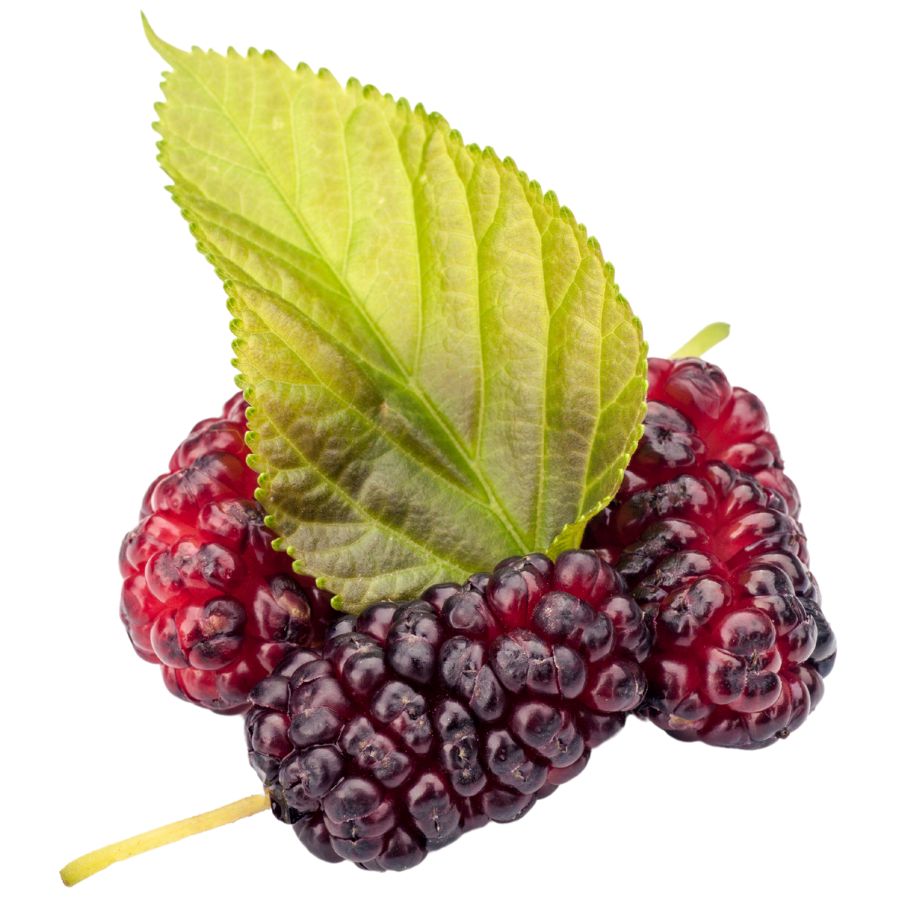
American beautyberry, sometimes called French mulberry or sourbush, is highly easily recognizable thanks to its bright clusters of purple berries wrapped tightly around its stems. The plant itself has arching branches and broad, serrated leaves that give off a slight spicy scent when crushed.
The berries are edible and have a mild, slightly sweet flavor with a soft, juicy texture that some people find a little gritty. Only the ripe purple berries should be eaten, as the leaves and unripe berries are not considered edible.
One of the easiest ways to enjoy beautyberries is by making jelly, where the fruit’s subtle taste really shines through. Some people also simmer the berries into syrups or add them to baked goods, although the flavor can be too delicate to stand out without a little help from sugar or lemon.
Beautyberries are sometimes confused with pokeweed, but pokeweed’s berries are a darker purple and grow on red stems in drooping clusters rather than tight whorls. Always double-check the plant’s structure and berry arrangement so you can be sure you are harvesting true American beautyberry.
Pawpaw (Asimina triloba)
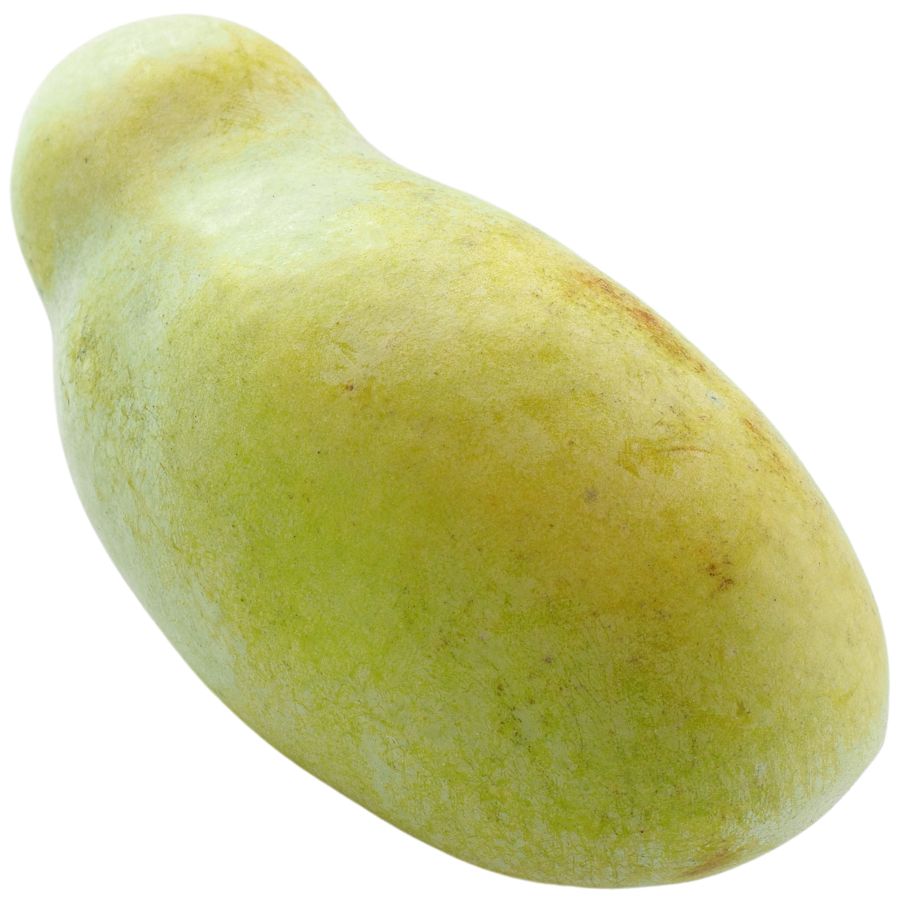
The pawpaw grows fruits that are green and shaped a little like small mangoes. Inside, the soft yellow flesh tastes like a blend of banana, mango, and melon, with a custard-like texture that melts in your mouth.
If you are comparing it to similar plants, keep in mind that young pawpaw trees can look a little like young magnolias because of their large leaves. True pawpaws grow fruits with large brown seeds tucked inside, while magnolias do not produce anything that looks or tastes similar.
You can eat the flesh straight out of the skin with a spoon, or mash it into puddings, smoothies, and even homemade ice cream. Some people also like to freeze it into cubes for later, although it does tend to brown quickly once exposed to air.
Stick to eating the soft inner flesh. Make sure not to ingest the skin and seeds of the fruit because they contain compounds that can upset your stomach.
This fruit is that it was a favorite snack of Native Americans and early explorers long before it started showing up in backyard gardens.
Toxic Plants That Look Like Edible Plants
There are plenty of wild edibles to choose from, but some toxic native plants closely resemble them. Mistaking the wrong one can lead to severe illness or even death, so it’s important to know exactly what you’re picking.
Poison Hemlock (Conium maculatum)
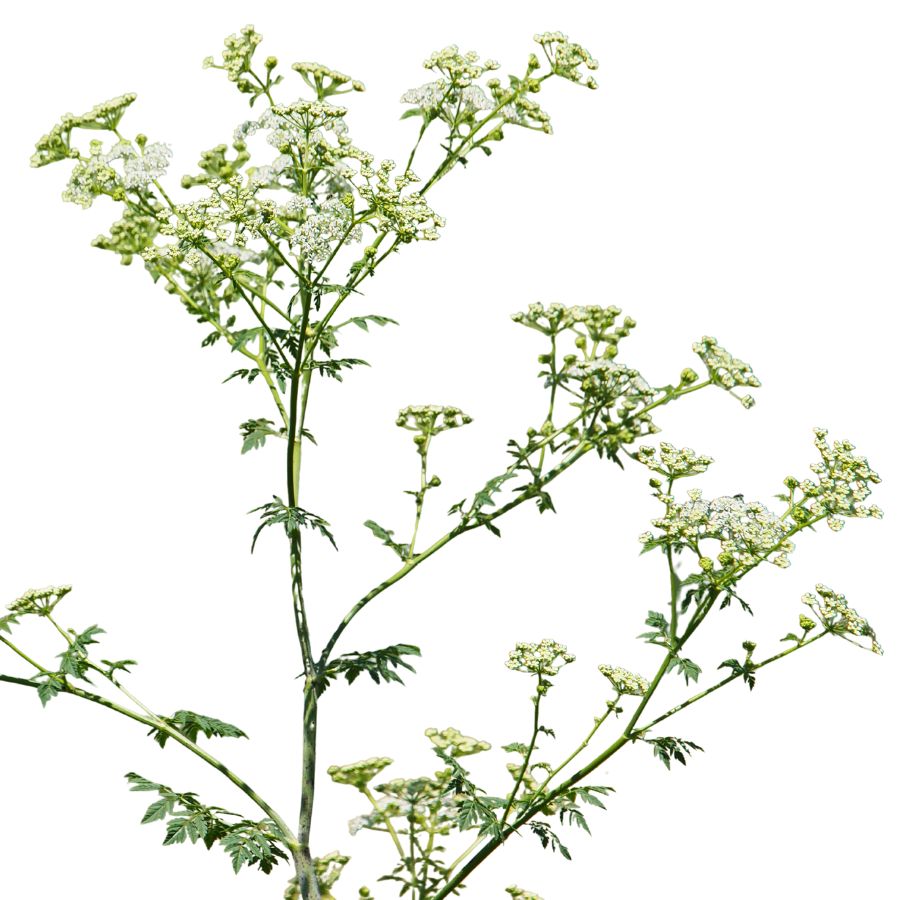
Often mistaken for: Wild carrot (Daucus carota)
Poison hemlock is a tall plant with lacy leaves and umbrella-like clusters of tiny white flowers. It has smooth, hollow stems with purple blotches and grows in sunny places like roadsides, meadows, and stream banks.
Unlike wild carrot, which has hairy stems and a dark central floret, poison hemlock has a musty odor and no flower center spot. It’s extremely toxic; just a small amount can be fatal, and even touching the sap can irritate the skin.
Water Hemlock (Cicuta spp.)
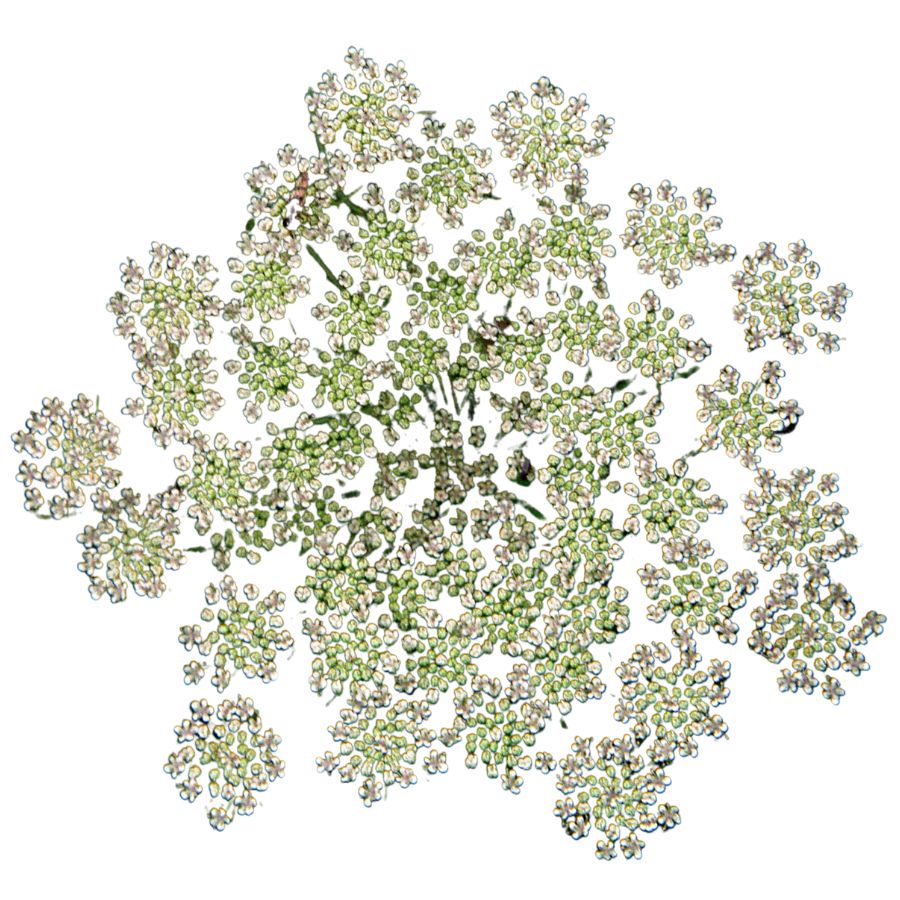
Often mistaken for: Wild parsnip (Pastinaca sativa) or wild celery (Apium spp.)
Water hemlock is a tall, branching plant with umbrella-shaped clusters of small white flowers. It grows in wet places like stream banks, marshes, and ditches, with stems that often show purple streaks or spots.
It can be confused with wild parsnip or wild celery, but its thick, hollow roots have internal chambers and release a yellow, foul-smelling sap when cut. Water hemlock is the most toxic plant in North America, and just a small amount can cause seizures, respiratory failure, and death.
False Hellebore (Veratrum viride)
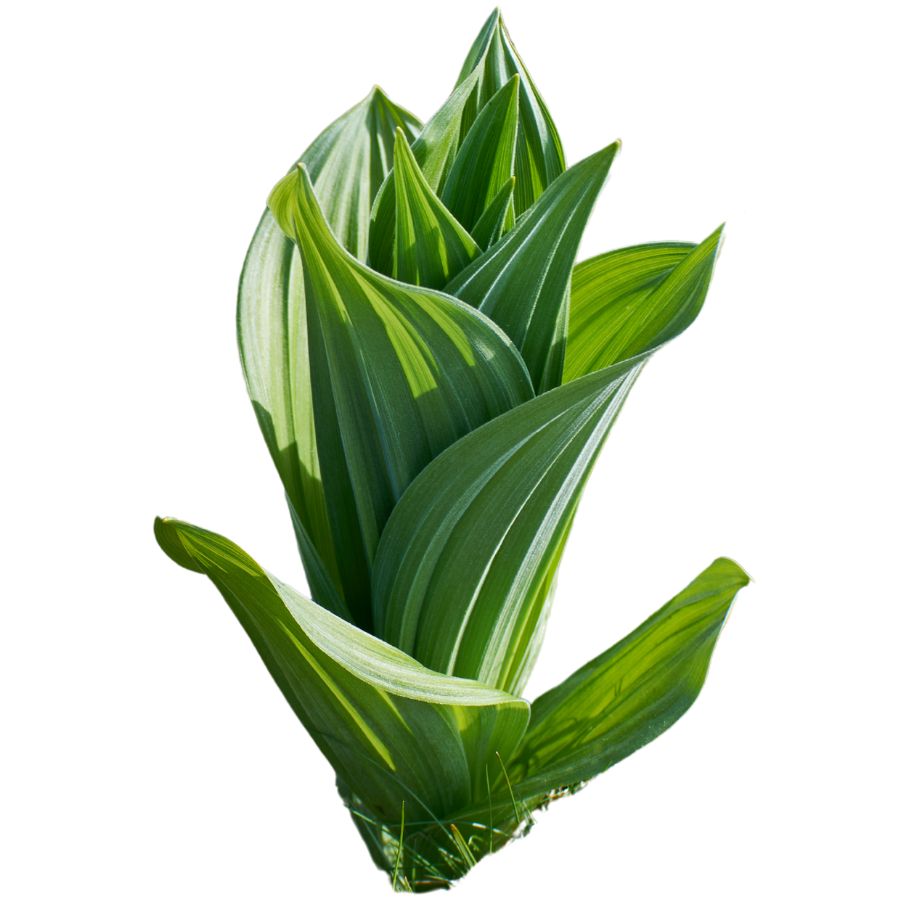
Often mistaken for: Ramps (Allium tricoccum)
False hellebore is a tall plant with broad, pleated green leaves that grow in a spiral from the base, often appearing early in spring. It grows in moist woods, meadows, and along streams.
It’s commonly mistaken for ramps, but ramps have a strong onion or garlic smell, while false hellebore is odorless and later grows a tall flower stalk. The plant is highly toxic, and eating any part can cause nausea, a slowed heart rate, and even death due to its alkaloids that affect the nervous and cardiovascular systems.
Death Camas (Zigadenus spp.)
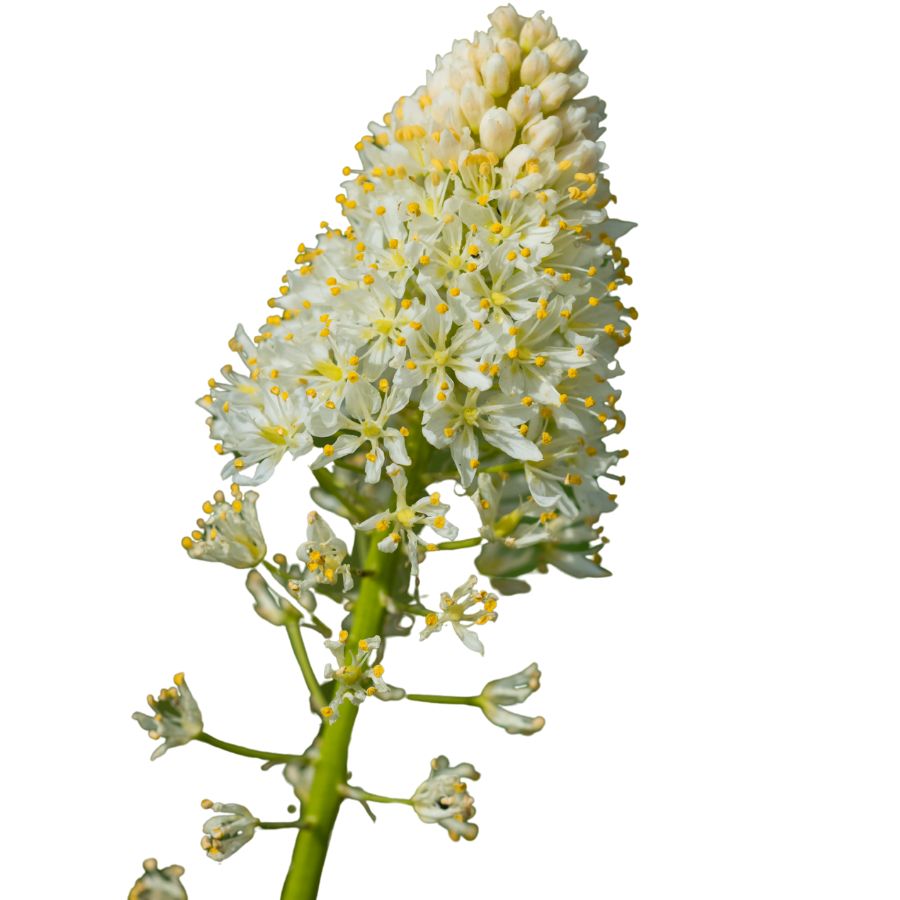
Often mistaken for: Wild onion or wild garlic (Allium spp.)
Death camas is a slender, grass-like plant that grows from underground bulbs and is found in open woods, meadows, and grassy hillsides. It has small, cream-colored flowers in loose clusters atop a tall stalk.
It’s often confused with wild onion or wild garlic due to their similar narrow leaves and habitats, but only Allium plants have a strong onion or garlic scent, while death camas has none. The plant is extremely poisonous, especially the bulbs, and even a small amount can cause nausea, vomiting, a slowed heartbeat, and potentially fatal respiratory failure.
Buckthorn Berries (Rhamnus spp.)
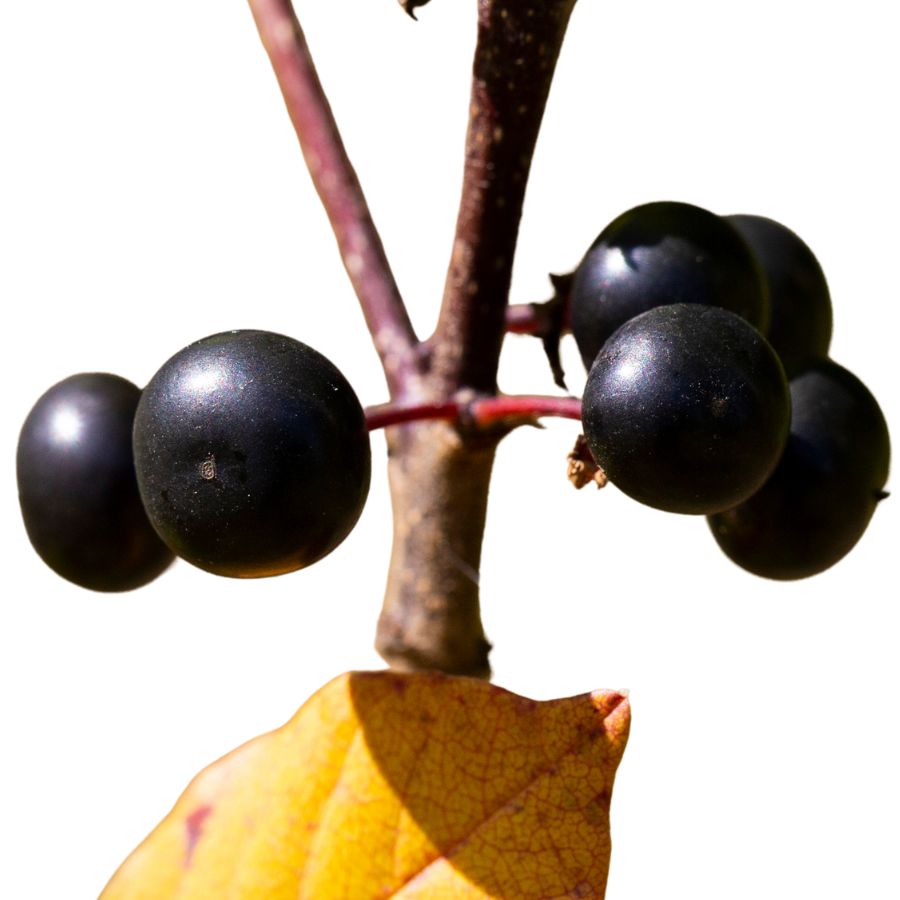
Often mistaken for: Elderberries (Sambucus spp.)
Buckthorn is a shrub or small tree often found along woodland edges, roadsides, and disturbed areas. It produces small, round berries that ripen to dark purple or black and usually grow in loose clusters.
These berries are sometimes mistaken for elderberries and other wild fruits, which also grow in dark clusters, but elderberries form flat-topped clusters on reddish stems while buckthorn berries are more scattered. Buckthorn berries are unsafe to eat as they contain compounds that can cause cramping, vomiting, and diarrhea, and large amounts may lead to dehydration and serious digestive problems.
Mayapple (Podophyllum peltatum)
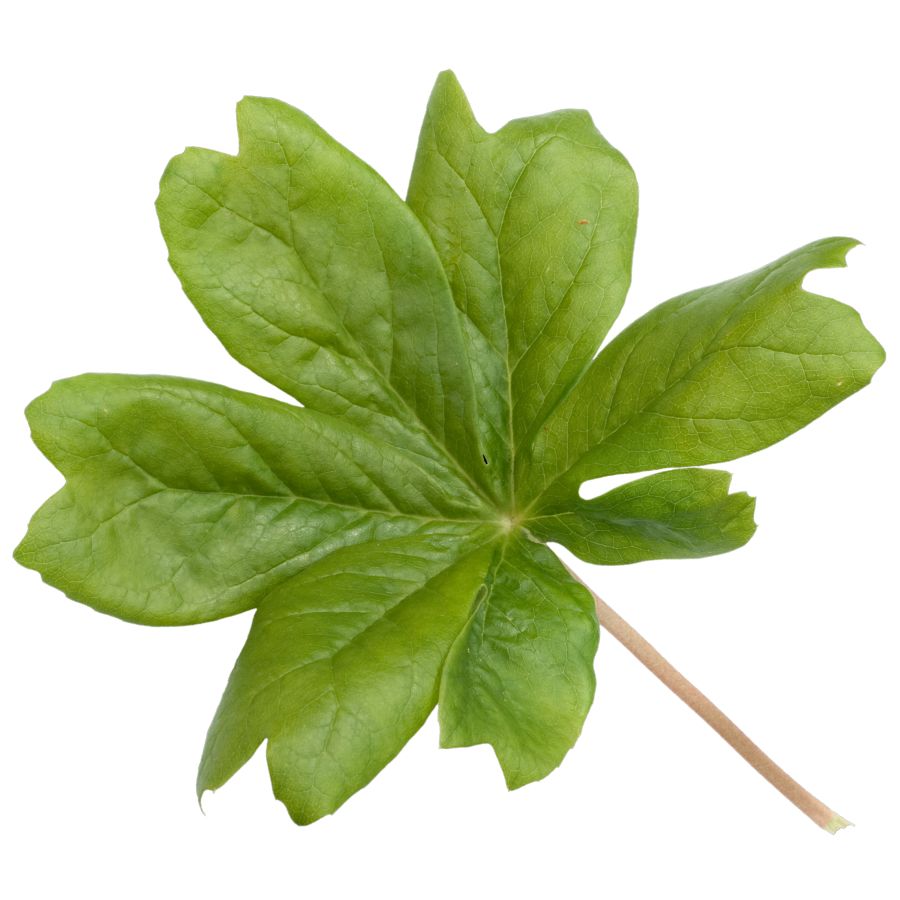
Often mistaken for: Wild grapes (Vitis spp.)
Mayapple is a low-growing plant found in shady forests and woodland clearings. It has large, umbrella-like leaves and produces a single pale fruit hidden beneath the foliage.
The unripe fruit resembles a small green grape, causing confusion with wild grapes, which grow in woody clusters on vines. All parts of the mayapple are toxic except the fully ripe, yellow fruit, which is only safe in small amounts. Eating unripe fruit or other parts can lead to nausea, vomiting, and severe dehydration.
Virginia Creeper (Parthenocissus quinquefolia)
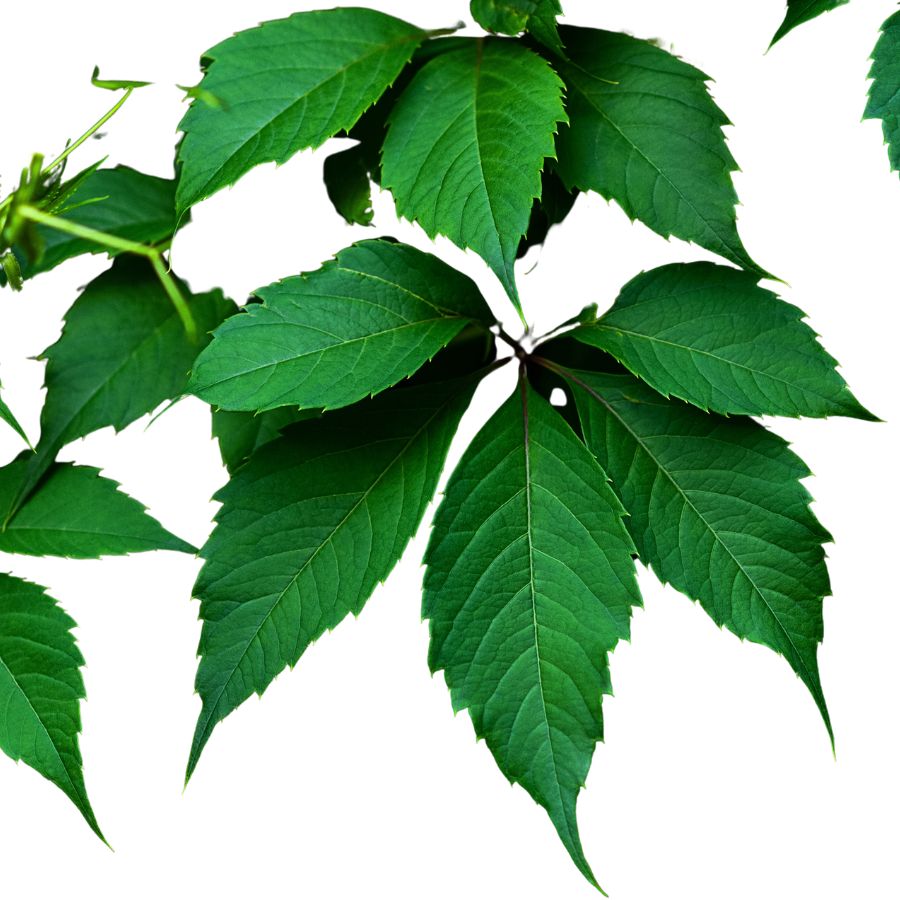
Often mistaken for: Wild grapes (Vitis spp.)
Virginia creeper is a fast-growing vine found on fences, trees, and forest edges. It has five leaflets per stem and produces small, bluish-purple berries from late summer to fall.
It’s often confused with wild grapes since both are climbing vines with similar berries, but grapevines have large, lobed single leaves and tighter fruit clusters. Virginia creeper’s berries are toxic to humans and contain oxalate crystals that can cause nausea, vomiting, and throat irritation.
Castor Bean (Ricinus communis)
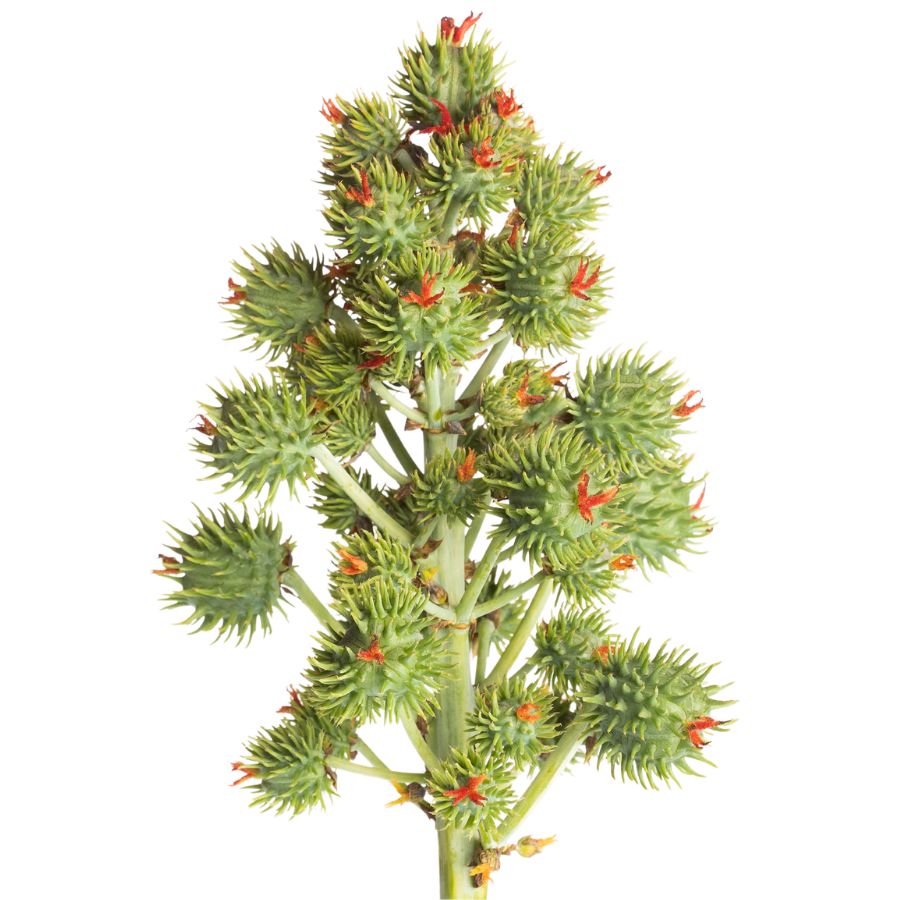
Often mistaken for: Wild rhubarb (Rumex spp. or Rheum spp.)
Castor bean is a bold plant with large, lobed leaves and tall red or green stalks, often found in gardens, along roadsides, and in disturbed areas in warmer regions in the US. Its red-tinged stems and overall size can resemble wild rhubarb to the untrained eye.
Unlike rhubarb, castor bean plants produce spiny seed pods containing glossy, mottled seeds that are extremely toxic. These seeds contain ricin, a deadly compound even in small amounts. While all parts of the plant are toxic, the seeds are especially dangerous and should never be handled or ingested.
Before you head out
Before embarking on any foraging activities, it is essential to understand and follow local laws and guidelines. Always confirm that you have permission to access any land and obtain permission from landowners if you are foraging on private property. Trespassing or foraging without permission is illegal and disrespectful.
For public lands, familiarize yourself with the foraging regulations, as some areas may restrict or prohibit the collection of mushrooms or other wild foods. These regulations and laws are frequently changing so always verify them before heading out to hunt. What we have listed below may be out of date and inaccurate as a result.
How to Get the Best Results Foraging
Safety should always come first when it comes to foraging. Whether you’re in a rural forest or a suburban greenbelt, knowing how to harvest wild foods properly is a key part of staying safe and respectful in the field.
Always Confirm Plant ID Before You Harvest Anything
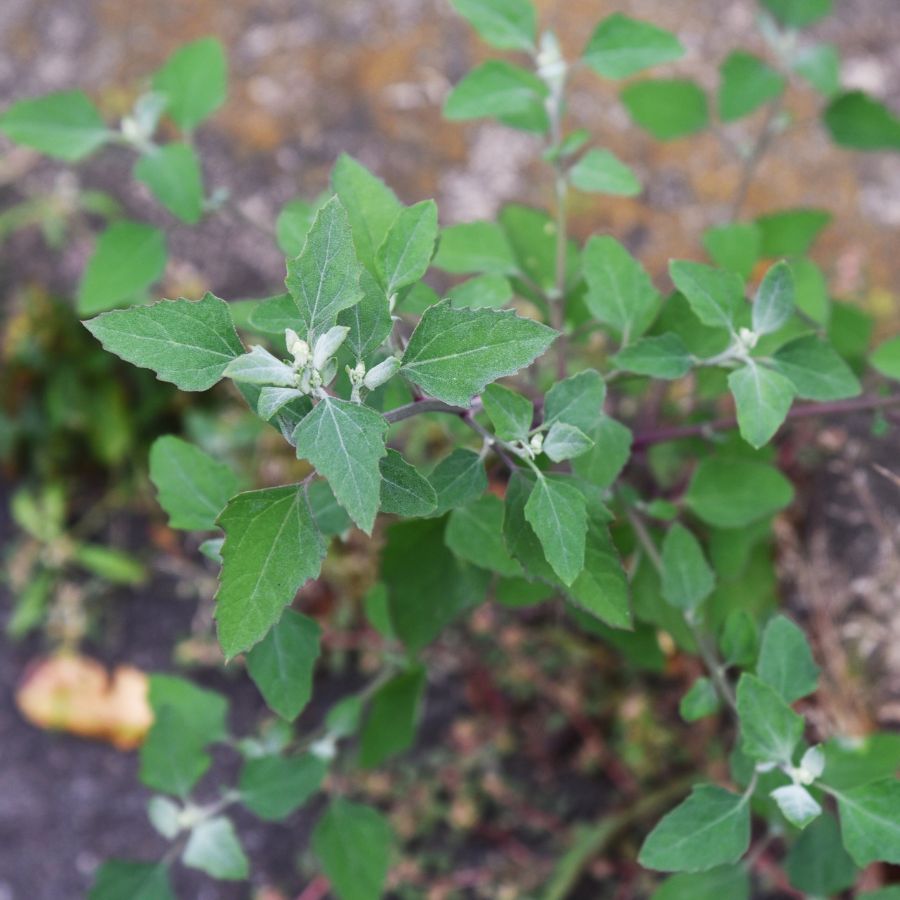
Knowing exactly what you’re picking is the most important part of safe foraging. Some edible plants have nearly identical toxic lookalikes, and a wrong guess can make you seriously sick.
Use more than one reliable source to confirm your ID, like field guides, apps, and trusted websites. Pay close attention to small details. Things like leaf shape, stem texture, and how the flowers or fruits are arranged all matter.
Not All Edible Plants Are Safe to Eat Whole
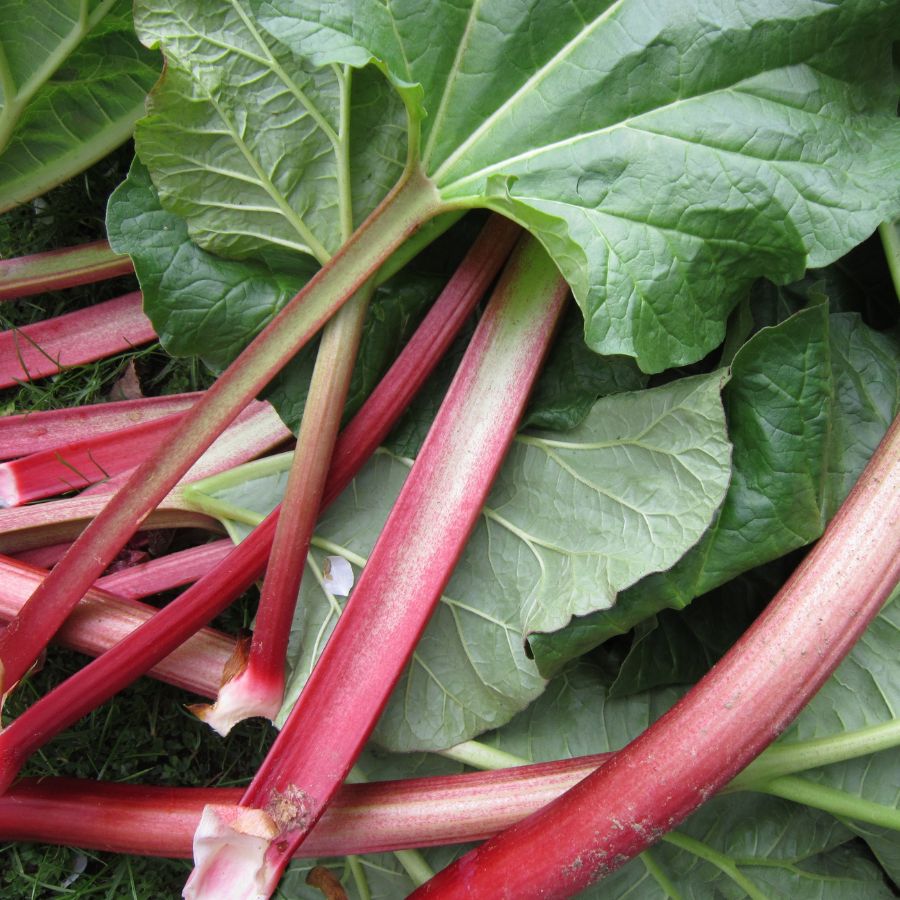
Just because a plant is edible doesn’t mean every part of it is safe. Some plants have leaves, stems, or seeds that can be toxic if eaten raw or prepared the wrong way.
For example, pokeweed is only safe when young and properly cooked, while elderberries need to be heated before eating. Rhubarb stems are fine, but the leaves are poisonous. Always look up which parts are edible and how they should be handled.
Avoid Foraging in Polluted or Contaminated Areas
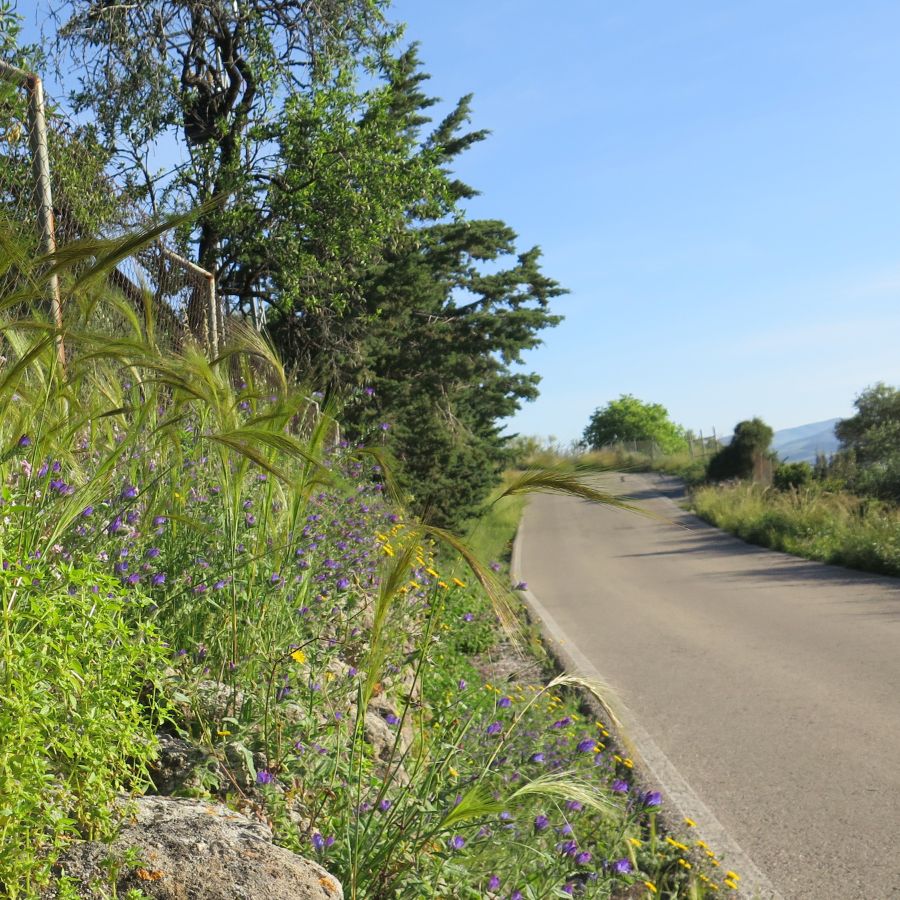
Where you forage matters just as much as what you pick. Plants growing near roads, buildings, or farmland might be coated in chemicals or growing in polluted soil.
Even safe plants can take in harmful substances from the air, water, or ground. Stick to clean, natural areas like forests, local parks that allow foraging, or your own yard when possible.
Don’t Harvest More Than What You Need
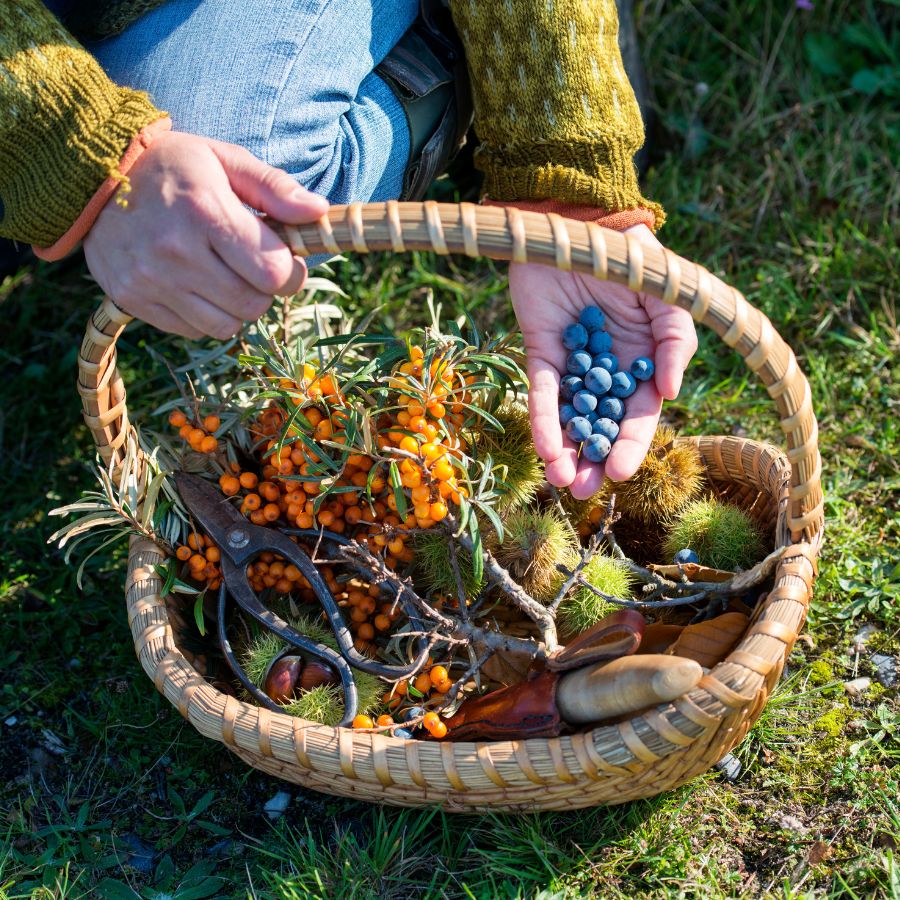
When you forage, take only what you plan to use. Overharvesting can hurt local plant populations and reduce future growth in that area.
Leaving plenty behind helps plants reproduce and supports wildlife that depends on them. It also ensures other foragers have a chance to enjoy the same resources.
Protect Yourself and Your Finds with Proper Foraging Gear
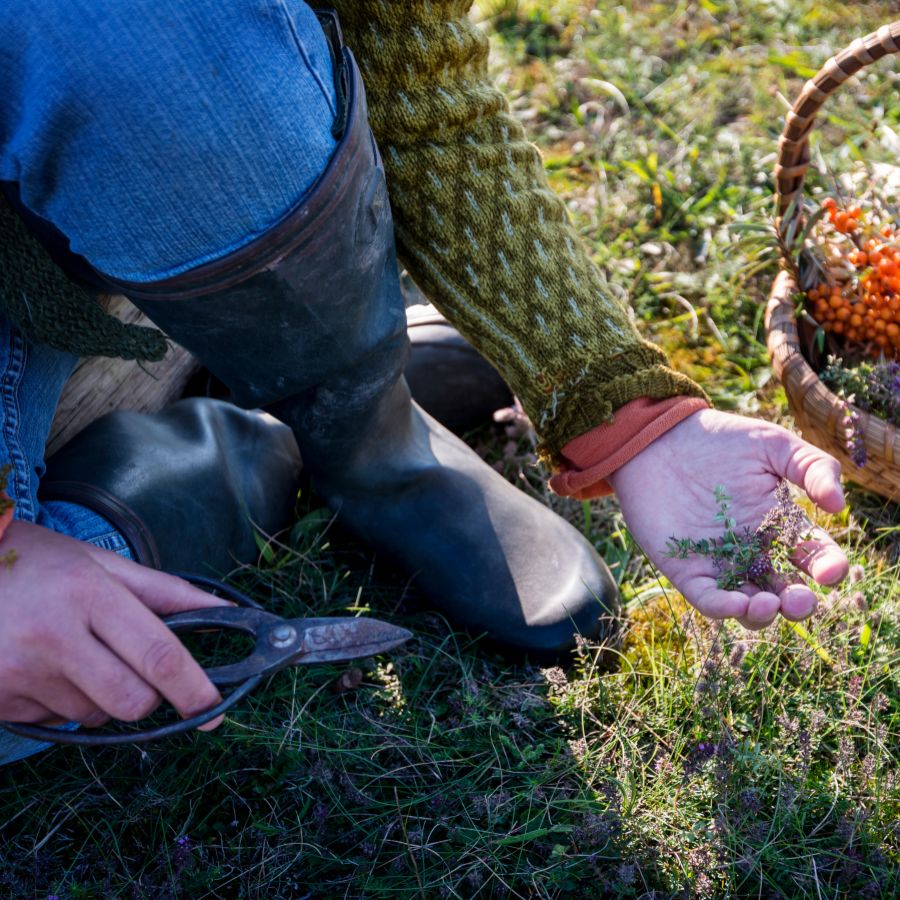
Having the right tools makes foraging easier and safer. Gloves protect your hands from irritants like stinging nettle, and a good knife or scissors lets you harvest cleanly without damaging the plant.
Use a basket or breathable bag to carry what you collect. Plastic bags hold too much moisture and can cause your greens to spoil before you get home.
This forager’s toolkit covers the essentials for any level of experience.
Watch for Allergic Reactions When Trying New Wild Foods

Even if a wild plant is safe to eat, your body might react to it in unexpected ways. It’s best to try a small amount first and wait to see how you feel.
Be extra careful with kids or anyone who has allergies. A plant that’s harmless for one person could cause a reaction in someone else.
Check Local Rules Before Foraging on Any Land
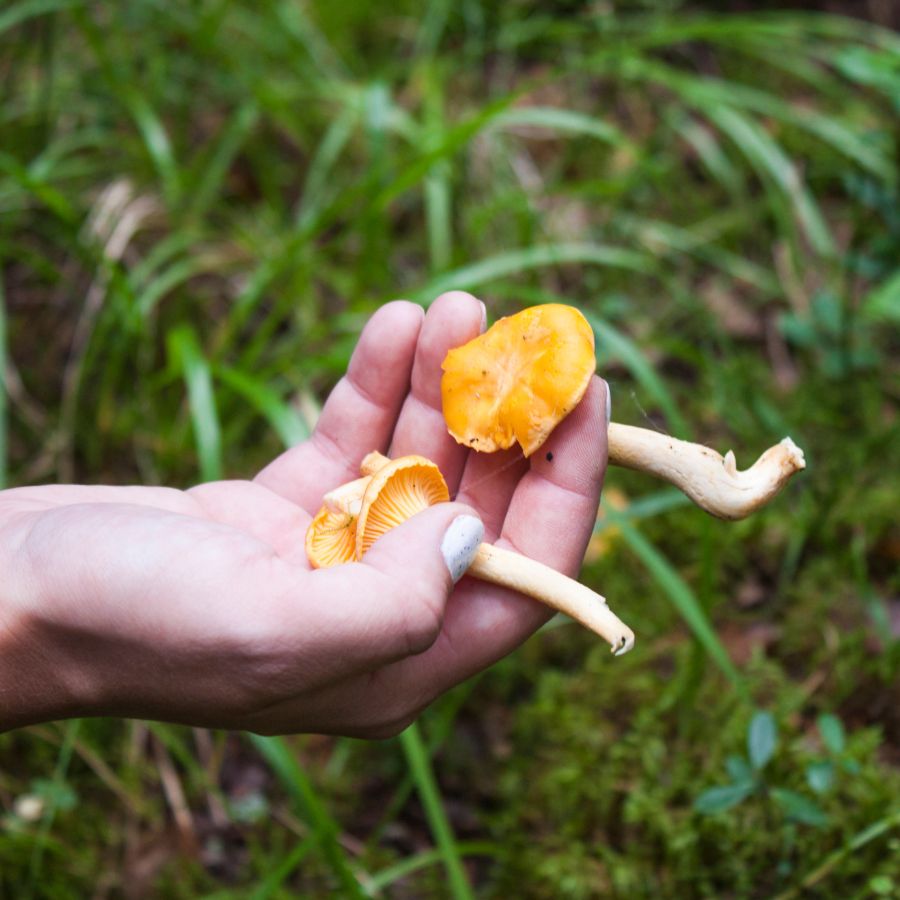
Before you start foraging, make sure you know the rules for the area you’re in. What’s allowed in one spot might be completely off-limits just a few miles away.
Some public lands permit limited foraging, while others, like national parks, usually don’t allow it at all. If you’re on private property, always get permission first.
Where to Find Forageables in the State
There is a range of foraging spots where edible plants grow naturally and often in abundance:
| Plant | Locations |
| American Basswood (Tilia americana) | Rothrock State Forest, Bald Eagle State Forest, Michaux State Forest |
| American Beech (Fagus grandifolia) | Tiadaghton State Forest, Loyalsock State Forest, Ohiopyle State Park |
| American Hazelnut (Corylus americana) | Tuscarora State Forest, Moraine State Park, Buchanan State Forest |
| American Persimmon (Diospyros virginiana) | Ridley Creek State Park, French Creek State Park, Codorus State Park |
| American Plum (Prunus americana) | Pinchot State Forest, Nescopeck State Park, Kings Gap Environmental Education Center |
| Bee Balm (Monarda didyma) | Cook Forest State Park, Ricketts Glen State Park, Oil Creek State Park |
| Black Cherry (Prunus serotina) | Sproul State Forest, Allegheny National Forest, Moshannon State Forest |
| Black Raspberry (Rubus occidentalis) | Laurel Ridge State Park, Beltzville State Park, Clear Creek State Forest |
| Black Walnut (Juglans nigra) | Delaware State Forest, Weiser State Forest, Marsh Creek State Park |
| Blueberry (Vaccinium corymbosum, Vaccinium angustifolium) | Allegheny National Forest, Hickory Run State Park, Promised Land State Park |
| Burdock (Arctium minus) | Nockamixon State Park, French Creek State Park, Caledonia State Park |
| Cattail (Typha latifolia, Typha angustifolia) | Marsh Creek State Park, Presque Isle State Park, Bald Eagle State Park |
| Chickweed (Stellaria media) | Evansburg State Park, Tyler State Park, Keystone State Park |
| Common Dandelion (Taraxacum officinale) | Ohiopyle State Park, Raccoon Creek State Park, Pine Grove Furnace State Park |
| Common Milkweed (Asclepias syriaca) | French Creek State Park, Nolde Forest Environmental Education Center, Codorus State Park |
| Common Plantain (Plantago major, Plantago lanceolata) | Moraine State Park, Prince Gallitzin State Park, Gifford Pinchot State Park |
| Common Blue Violet (Viola sororia) | Ridley Creek State Park, White Clay Creek Preserve, Sinnemahoning State Park |
| Curly Dock (Rumex crispus) | Keystone State Park, Canoe Creek State Park, Blue Marsh Lake Recreation Area |
| Daylily (Hemerocallis fulva) | Tyler State Park, Benjamin Rush State Park, Jacobsburg Environmental Education Center |
| Elderberry (Sambucus nigra subsp. canadensis) | Allegheny National Forest, Rothrock State Forest, Parker Dam State Park |
| Garlic Mustard (Alliaria petiolata) | Nolde Forest Environmental Education Center, French Creek State Park, Ricketts Glen State Park |
| Groundnut (Apios americana) | Susquehannock State Forest, French Creek State Park, Marsh Creek State Park |
| Hickory (Carya spp.) | Michaux State Forest, Buchanan State Forest, Tuscarora State Forest |
| Highbush Cranberry (Viburnum opulus var. americanum) | Prince Gallitzin State Park, Promised Land State Park, Moraine State Park |
| Hog Peanut (Amphicarpaea bracteata) | Weiser State Forest, Tiadaghton State Forest, Rothrock State Forest |
| Orange Jewelweed (Impatiens capensis) | Bald Eagle State Forest, Ricketts Glen State Park, Cook Forest State Park |
| Lamb’s Quarters (Chenopodium album) | Nescopeck State Park, Tyler State Park, Big Pocono State Park |
| Mayapple (Podophyllum peltatum) | Raccoon Creek State Park, Cook Forest State Park, Rothrock State Forest |
| Mulberry (Morus rubra, Morus alba) | Ridley Creek State Park, Fort Washington State Park, French Creek State Park |
| Ostrich Fern (Matteuccia struthiopteris) | Sproul State Forest, Tioga State Forest, Loyalsock State Forest |
| Pawpaw (Asimina triloba) | Tyler State Park, Washington Crossing Historic Park, Fort Washington State Park |
| Purslane (Portulaca oleracea) | Beltzville State Park, Evansburg State Park, Nockamixon State Park |
| Red Clover (Trifolium pratense) | Bald Eagle State Forest, Buchanan State Forest, Ohiopyle State Park |
| Sheep Sorrel (Rumex acetosella) | Clear Creek State Forest, Weiser State Forest, Pinchot State Forest |
| Spicebush (Lindera benzoin) | Bald Eagle State Forest, French Creek State Park, Nolde Forest Environmental Education Center |
| Spring Beauty (Claytonia virginica) | Rothrock State Forest, Loyalsock State Forest, Sproul State Forest |
| Stinging Nettle (Urtica dioica) | Allegheny National Forest, Tuscarora State Forest, Michaux State Forest |
| Wild Strawberry (Fragaria virginiana) | Ricketts Glen State Park, Hickory Run State Park, Laurel Hill State Park |
| Sumac (Rhus typhina, Rhus glabra) | Rothrock State Forest, Moshannon State Forest, Delaware State Forest |
| Wild Grape (Vitis spp.) | French Creek State Park, Gifford Pinchot State Park, Tyler State Park |
| Wild Leek (Allium tricoccum) | Loyalsock State Forest, Tiadaghton State Forest, Sproul State Forest |
| Wild Onion (Allium canadense) | Marsh Creek State Park, French Creek State Park, Evansburg State Park |
| Wintergreen (Gaultheria procumbens) | Tioga State Forest, Susquehannock State Forest, Sproul State Forest |
| Wood Sorrel (Oxalis stricta, Oxalis spp.) | Ricketts Glen State Park, Tyler State Park, Moraine State Park |
Peak Foraging Seasons
Different edible plants grow at different times of year, depending on the season and weather. Timing your search makes all the difference.
Spring
Spring brings a fresh wave of wild edible plants as the ground thaws and new growth begins:
| Plant | Months | Best Weather Conditions |
| Common Blue Violet (Viola sororia) | April–May | Cool and damp |
| Garlic Mustard (Alliaria petiolata) | April–June | Moist, shady conditions |
| Ostrich Fern (Matteuccia struthiopteris) | April–May | Cool, moist days |
| Spring Beauty (Claytonia virginica) | March–May | Cool and moist |
| Stinging Nettle (Urtica dioica) | March–May | Damp, overcast days |
| Wild Leek (Allium tricoccum) | April–May | Cool, damp woods |
| Wild Onion (Allium canadense) | March–May | Moist, sunny patches |
| Spicebush (Lindera benzoin) | April–May, September–October | Warm spring or dry autumn |
| Burdock (Arctium minus) | April–October | After rain, when soil is moist |
| Cattail (Typha latifolia, Typha angustifolia) | April–October | Mild temperatures, marshy conditions |
| Common Plantain (Plantago major, Plantago lanceolata) | April–October | After rain, mild days |
| Red Clover (Trifolium pratense) | May–September | Warm, partly sunny |
| Sheep Sorrel (Rumex acetosella) | April–October | Cool and moist conditions |
| Wood Sorrel (Oxalis stricta, Oxalis spp.) | April–October | Cool, shaded conditions |
| Chickweed (Stellaria media) | March–May, September–November | Cool, moist days |
| Common Dandelion (Taraxacum officinale) | March–May, September–November | Cool, damp weather |
| Curly Dock (Rumex crispus) | April–June, September–October | Moist ground after rain |
| Mayapple (Podophyllum peltatum) | May–June | Humid, shady woods |
| Wild Strawberry (Fragaria vesca) | May–June | Warm, dewy mornings |
| American Plum (Prunus americana) | May–July | Warm, sunny with occasional rain |
Summer
Summer is a peak season for foraging, with fruits, flowers, and greens growing in full force:
| Plant | Months | Best Weather Conditions |
| Mulberry (Morus rubra, Morus alba) | June–July | Warm, humid mornings |
| American Basswood (Tilia americana) | June–August | Warm, sunny days |
| Bee Balm (Monarda didyma) | June–August | Warm and sunny |
| Black Cherry (Prunus serotina) | June–August | Hot, sunny weather |
| Black Raspberry (Rubus occidentalis) | June–July | Warm mornings after rain |
| Blueberry (Vaccinium corymbosum, Vaccinium angustifolium) | June–August | Mildly warm days |
| Common Milkweed (Asclepias syriaca) | June–August | Warm, humid days |
| Daylily (Hemerocallis fulva) | June–August | Warm, partly cloudy |
| Elderberry (Sambucus nigra subsp. canadensis) | July–August | Hot, sunny conditions |
| Lamb’s Quarters (Chenopodium album) | June–September | Dry, sunny days |
| Purslane (Portulaca oleracea) | June–September | Hot, dry days |
| Hog Peanut (Amphicarpaea bracteata) | August–September | Humid, shady areas |
| Orange Jewelweed (Impatiens capensis) | August–September | Humid, after rains |
| Sumac (Rhus typhina, Rhus glabra) | August–September | Dry, hot weather |
| American Hazelnut (Corylus americana) | August–October | Dry days after light rain |
| Groundnut (Apios americana) | August–October | Moist, rich soil after rain |
| Pawpaw (Asimina triloba) | August–October | Warm, late-summer days |
| Wild Grape (Vitis spp.) | August–October | Sunny, dry spells |
Fall
As temperatures drop, many edible plants shift underground or produce their last harvests:
| Plant | Months | Best Weather Conditions |
| American Beech (Fagus grandifolia) | September–November | Cool, crisp conditions |
| American Persimmon (Diospyros virginiana) | September–November | Dry, cool days |
| Black Walnut (Juglans nigra) | September–October | Dry days after wind storms |
| Hickory (Carya spp.) | September–October | Dry, breezy days |
| Highbush Cranberry (Viburnum opulus var. americanum) | September–October | Cool, partly sunny |
Year-round
Winter foraging is limited but still possible, with hardy plants and preserved growth holding on through the cold:
| Plant | Months | Best Weather Conditions |
| Wintergreen (Gaultheria procumbens) | October–March | Cool, dry conditions |
One Final Disclaimer
The information provided in this article is for general informational and educational purposes only. Foraging for wild plants and mushrooms involves inherent risks. Some wild plants and mushrooms are toxic and can be easily mistaken for edible varieties.
Before ingesting anything, it should be identified with 100% certainty as edible by someone qualified and experienced in mushroom and plant identification, such as a professional mycologist or an expert forager. Misidentification can lead to serious illness or death.
All mushrooms and plants have the potential to cause severe adverse reactions in certain individuals, even death. If you are consuming foraged items, it is crucial to cook them thoroughly and properly and only eat a small portion to test for personal tolerance. Some people may have allergies or sensitivities to specific mushrooms and plants, even if they are considered safe for others.
Foraged items should always be fully cooked with proper instructions to ensure they are safe to eat. Many wild mushrooms and plants contain toxins and compounds that can be harmful if ingested.


